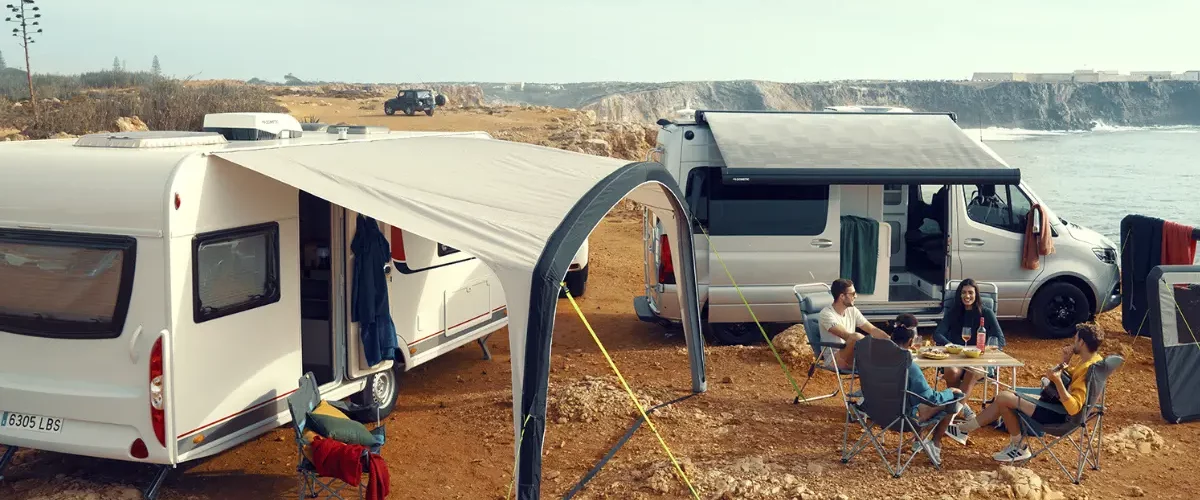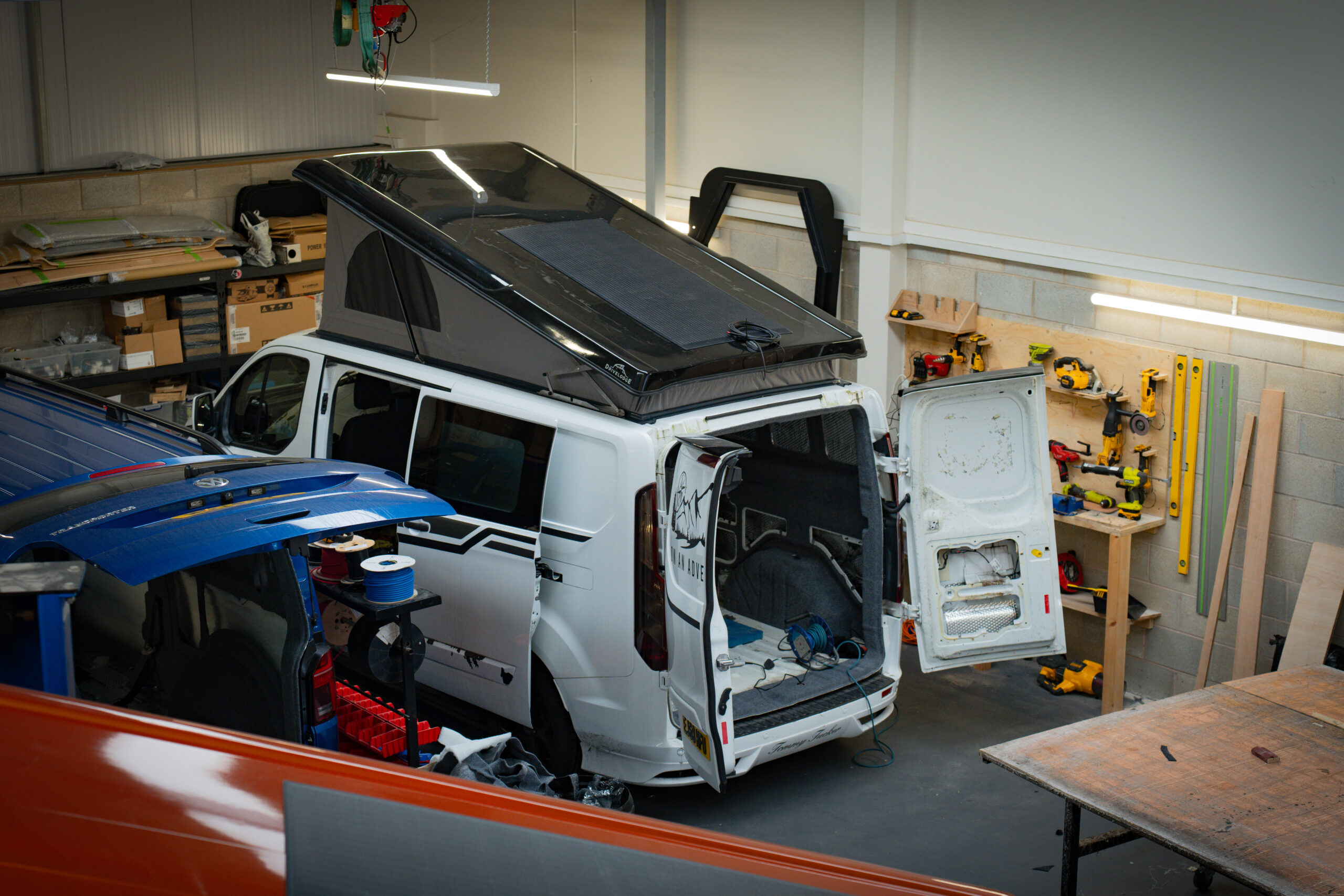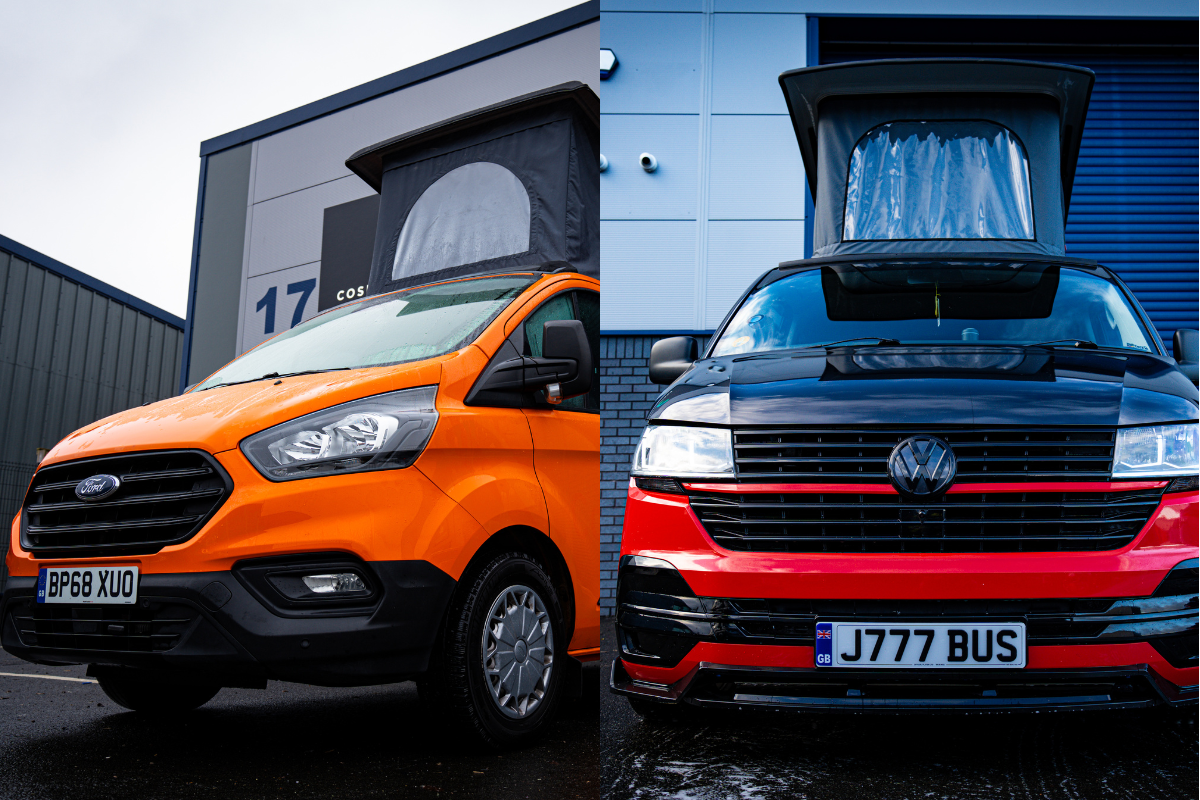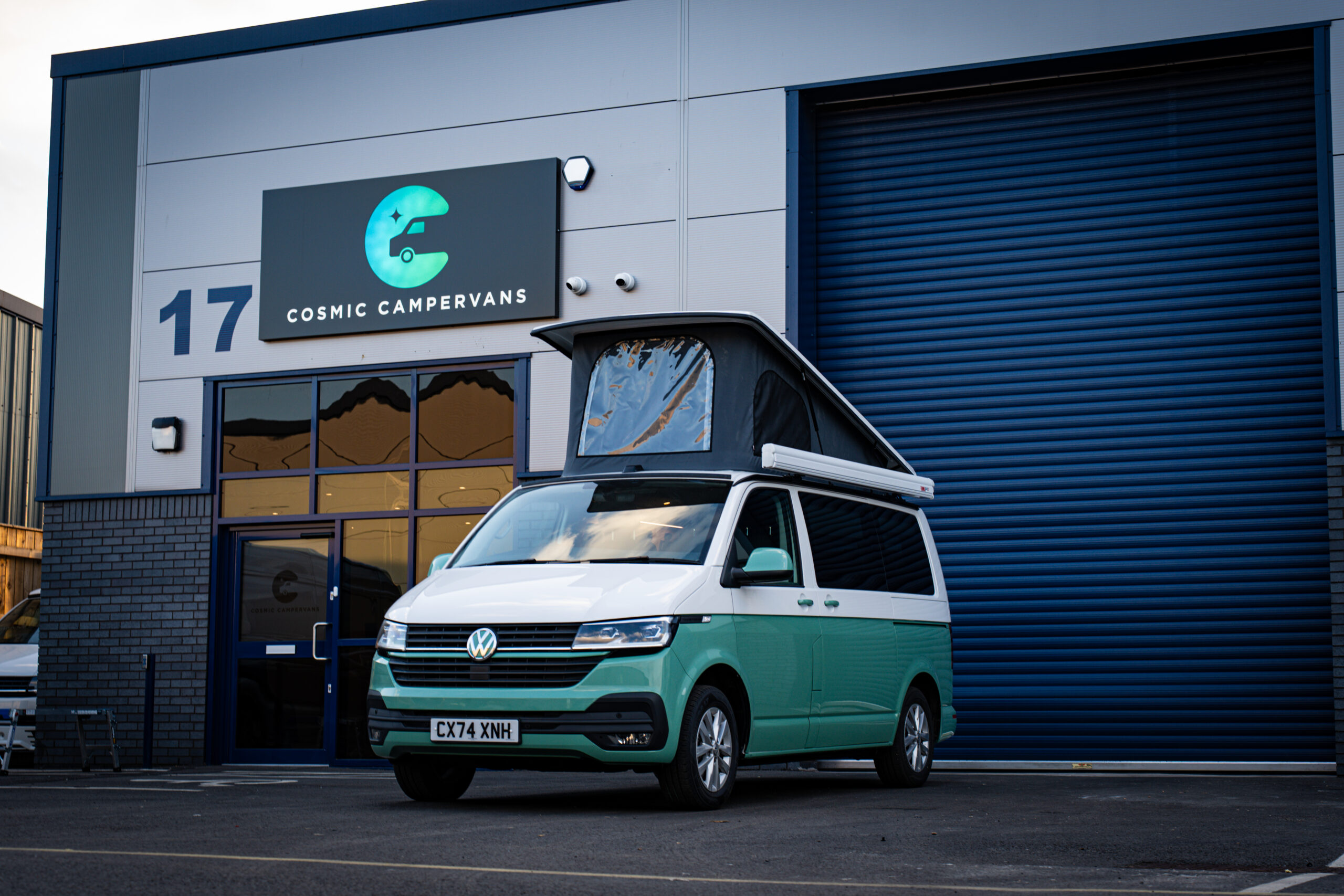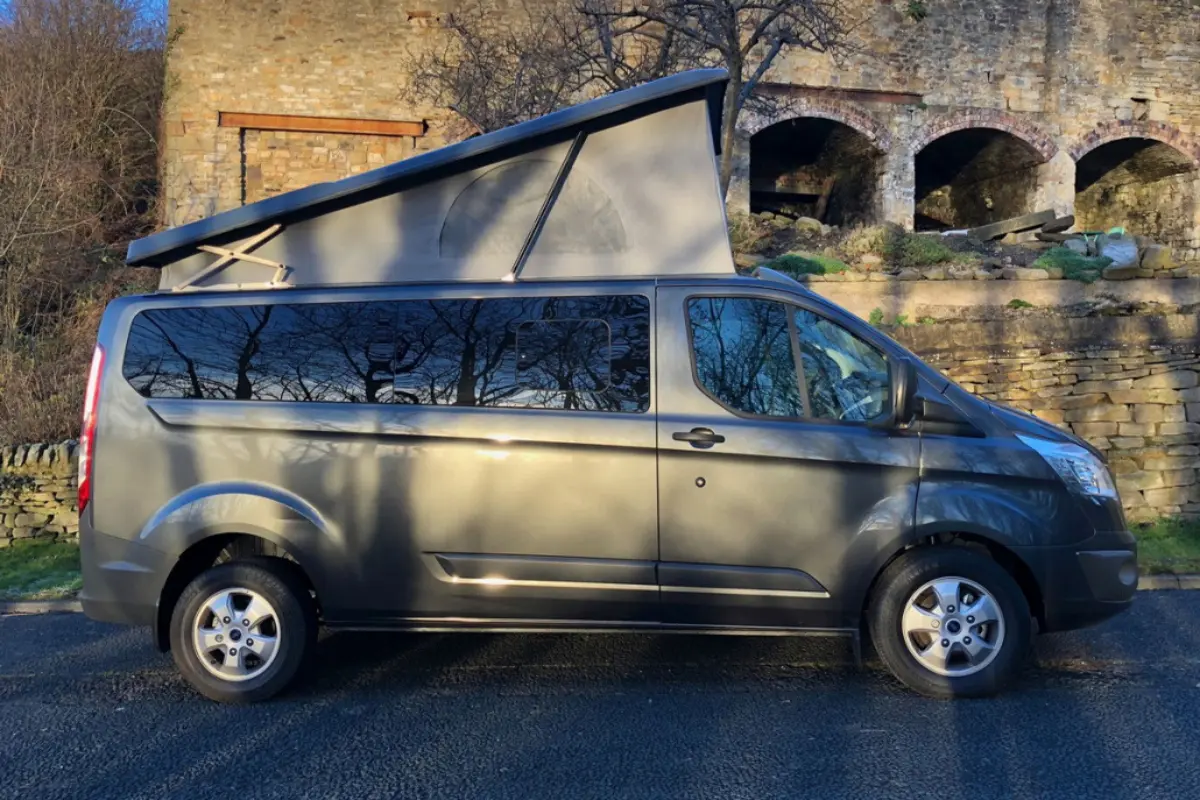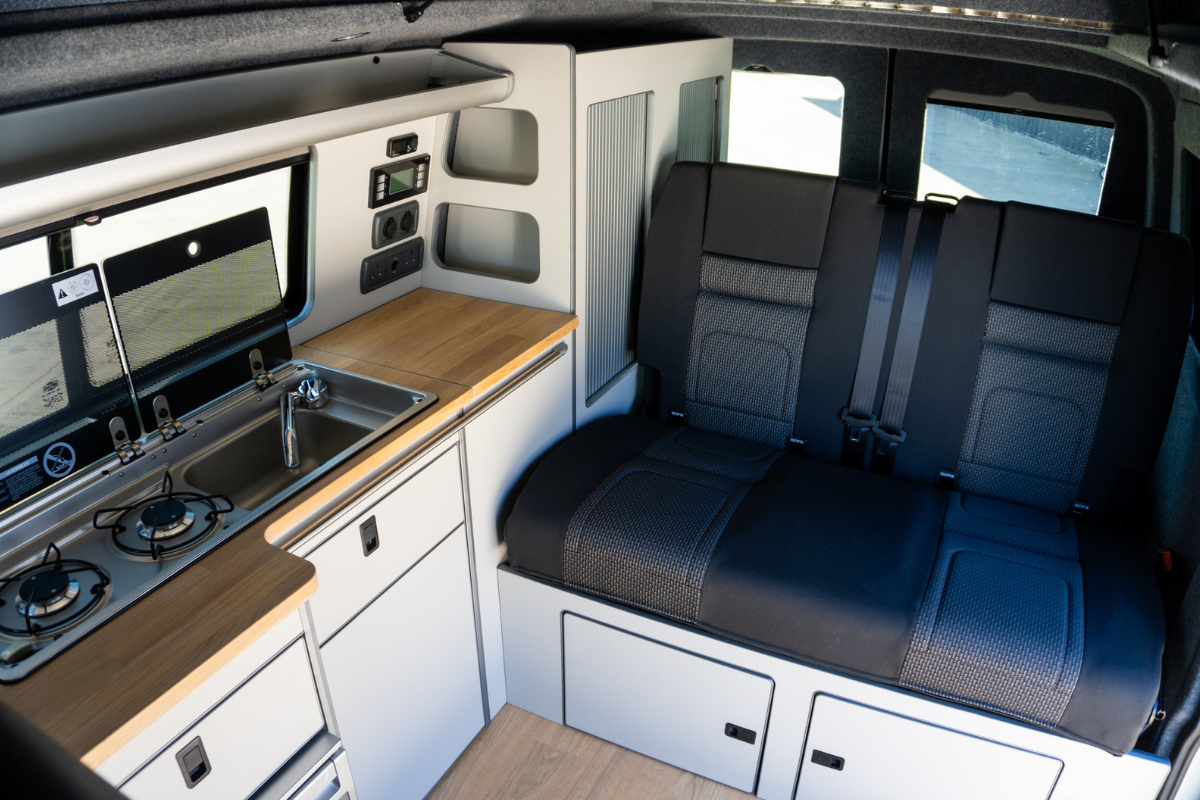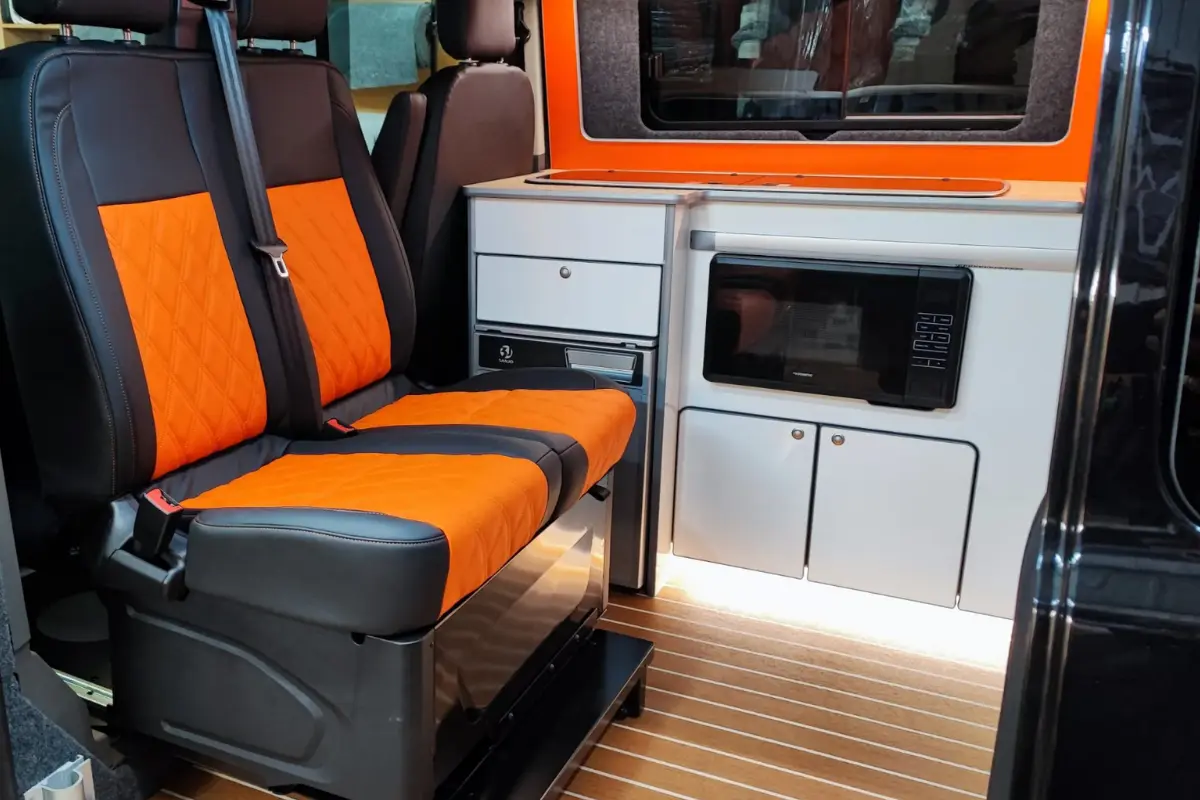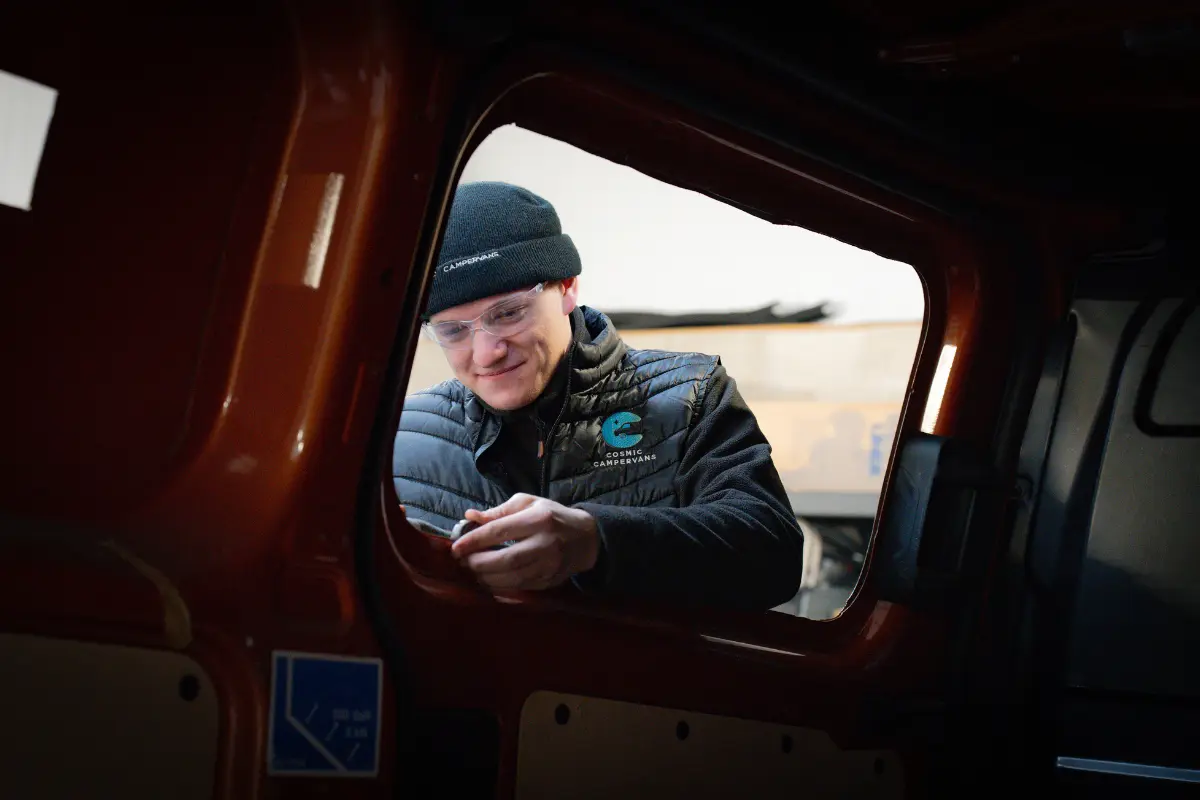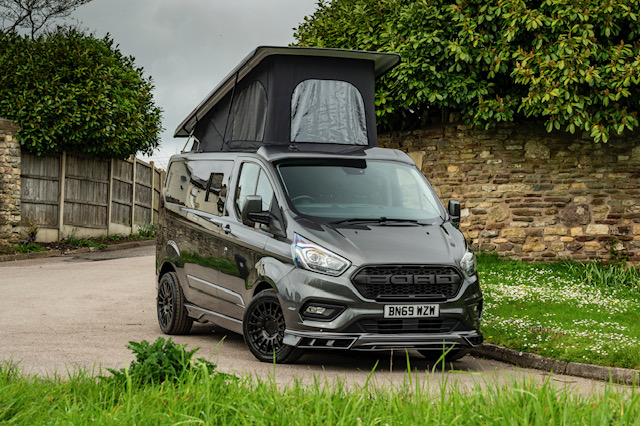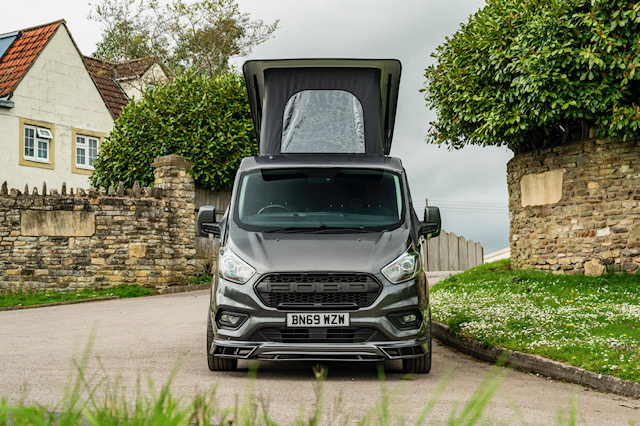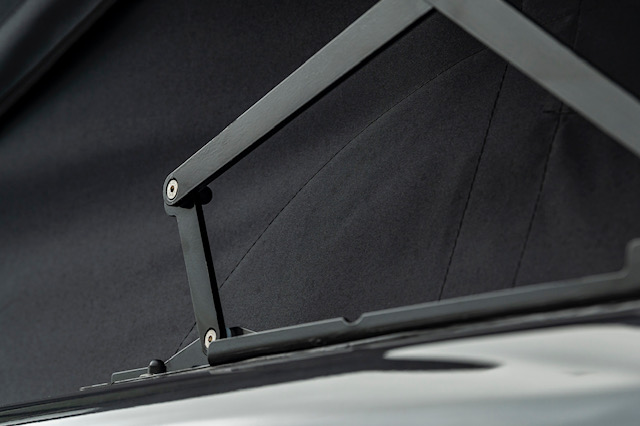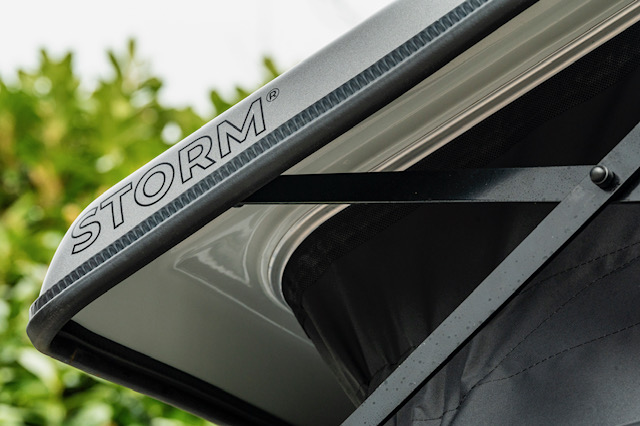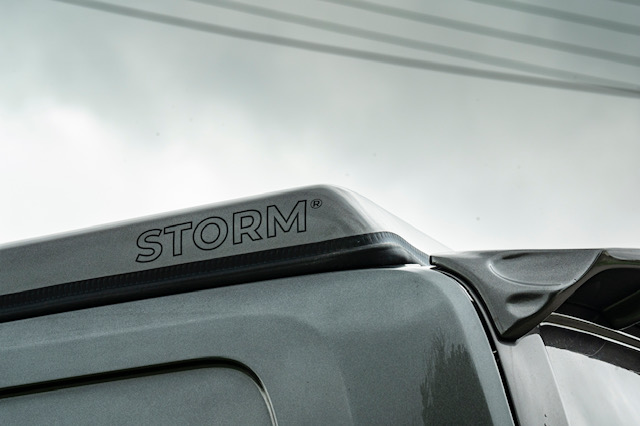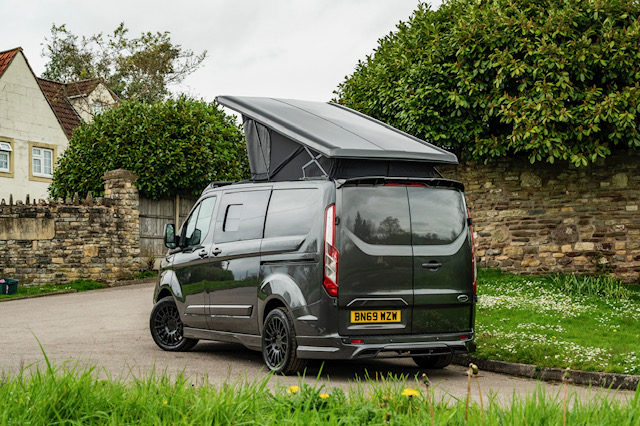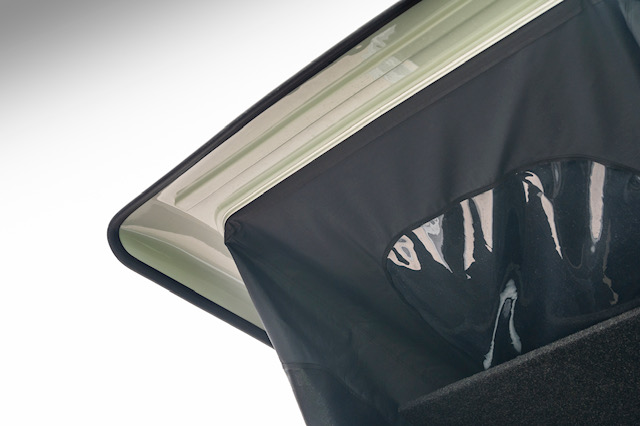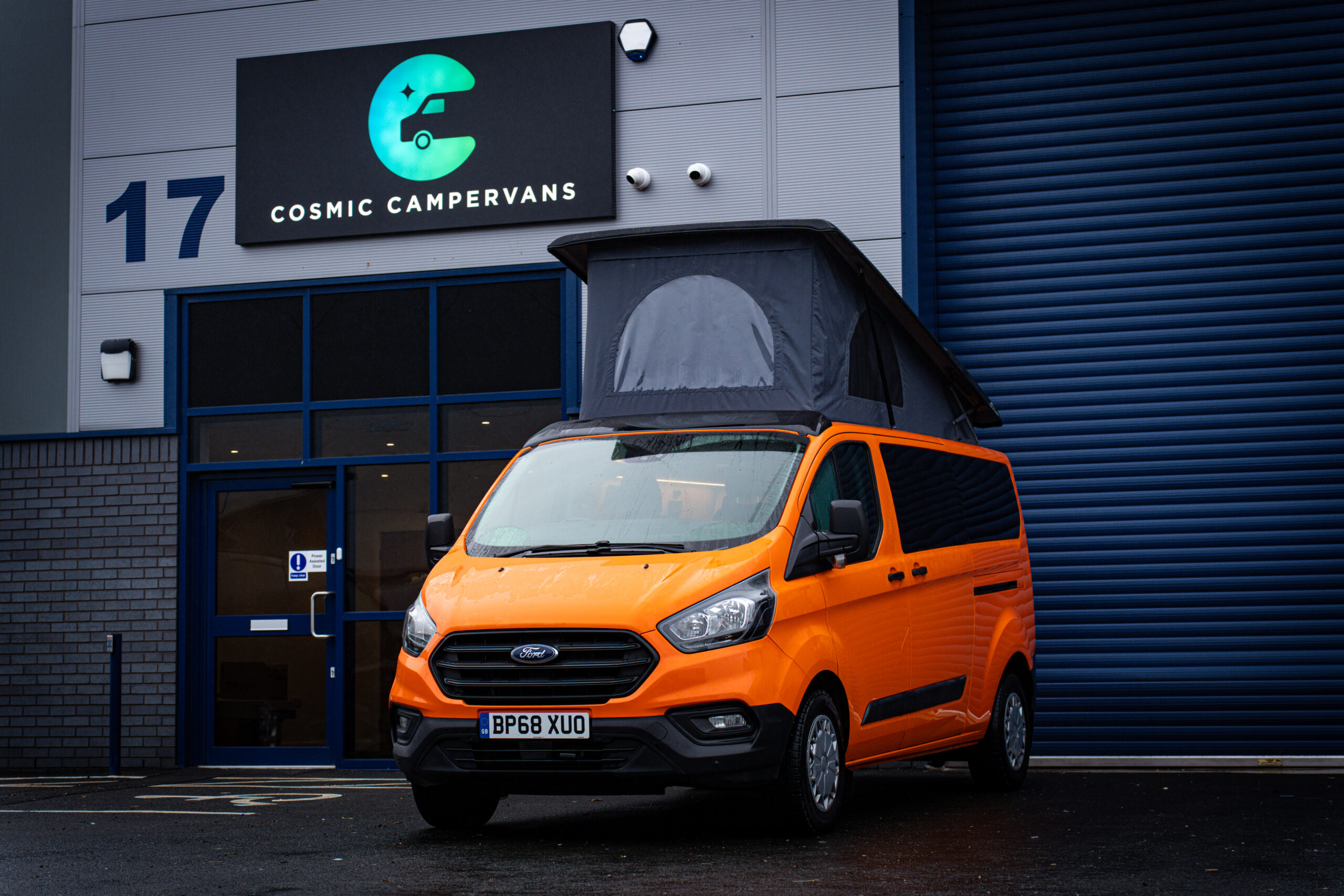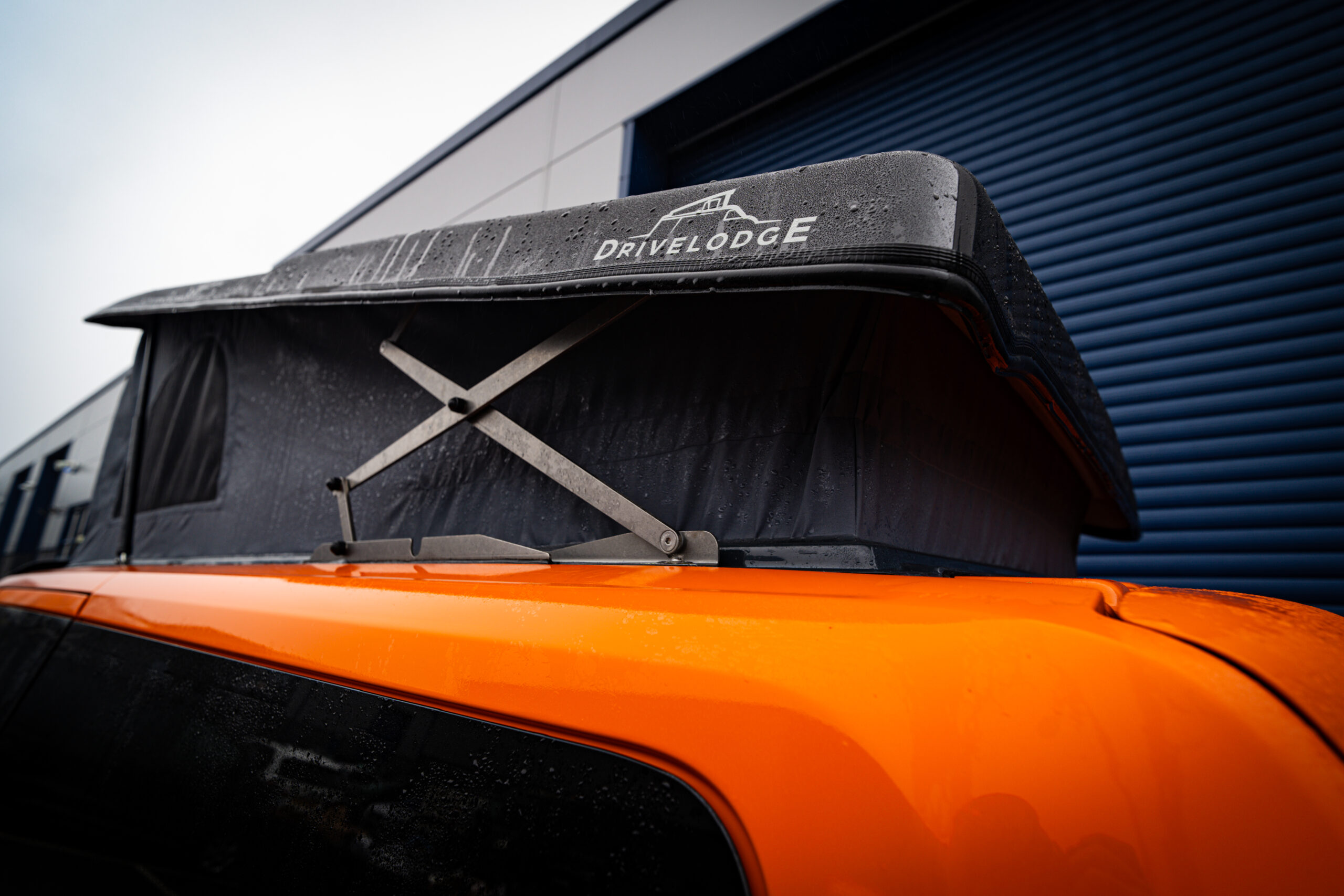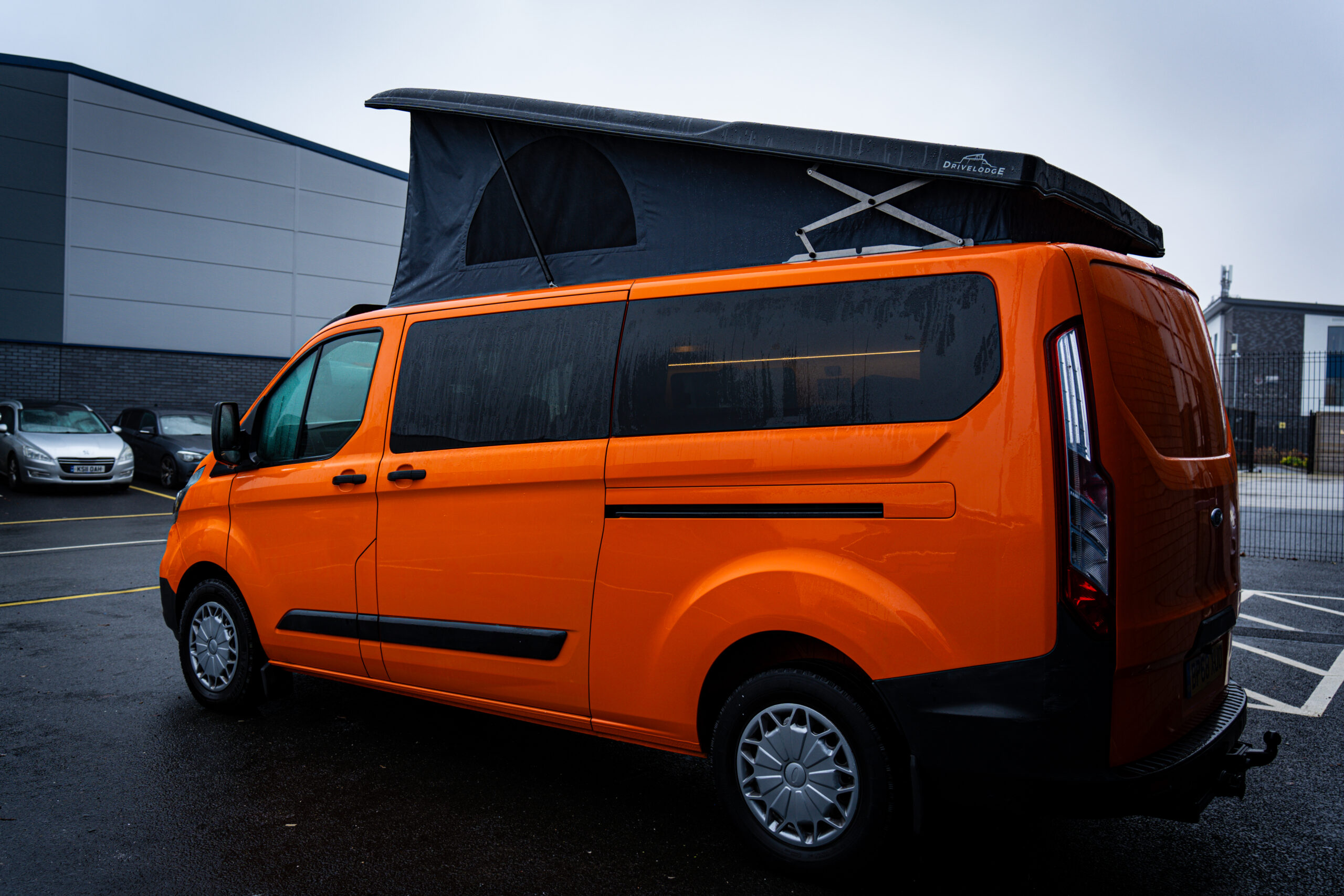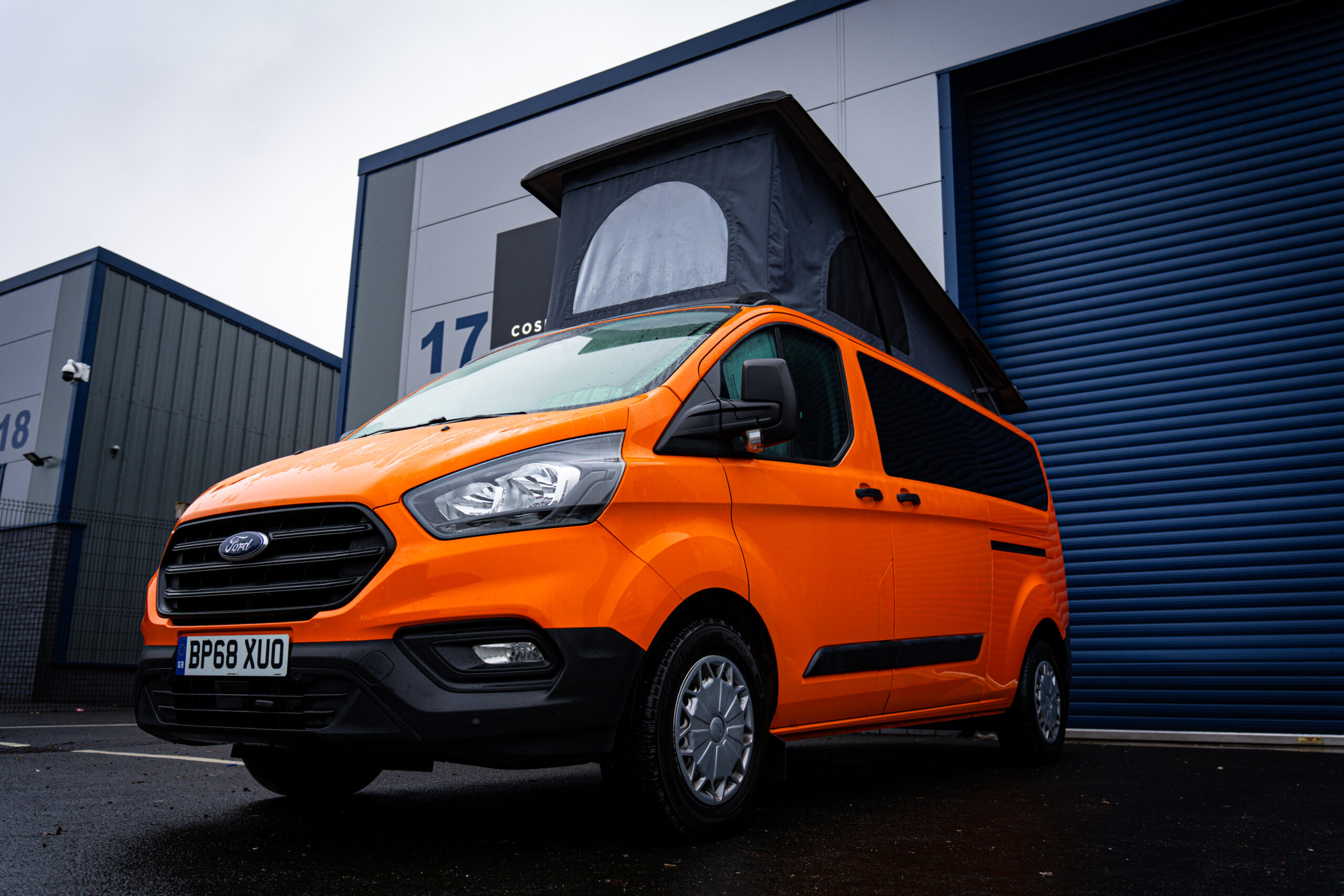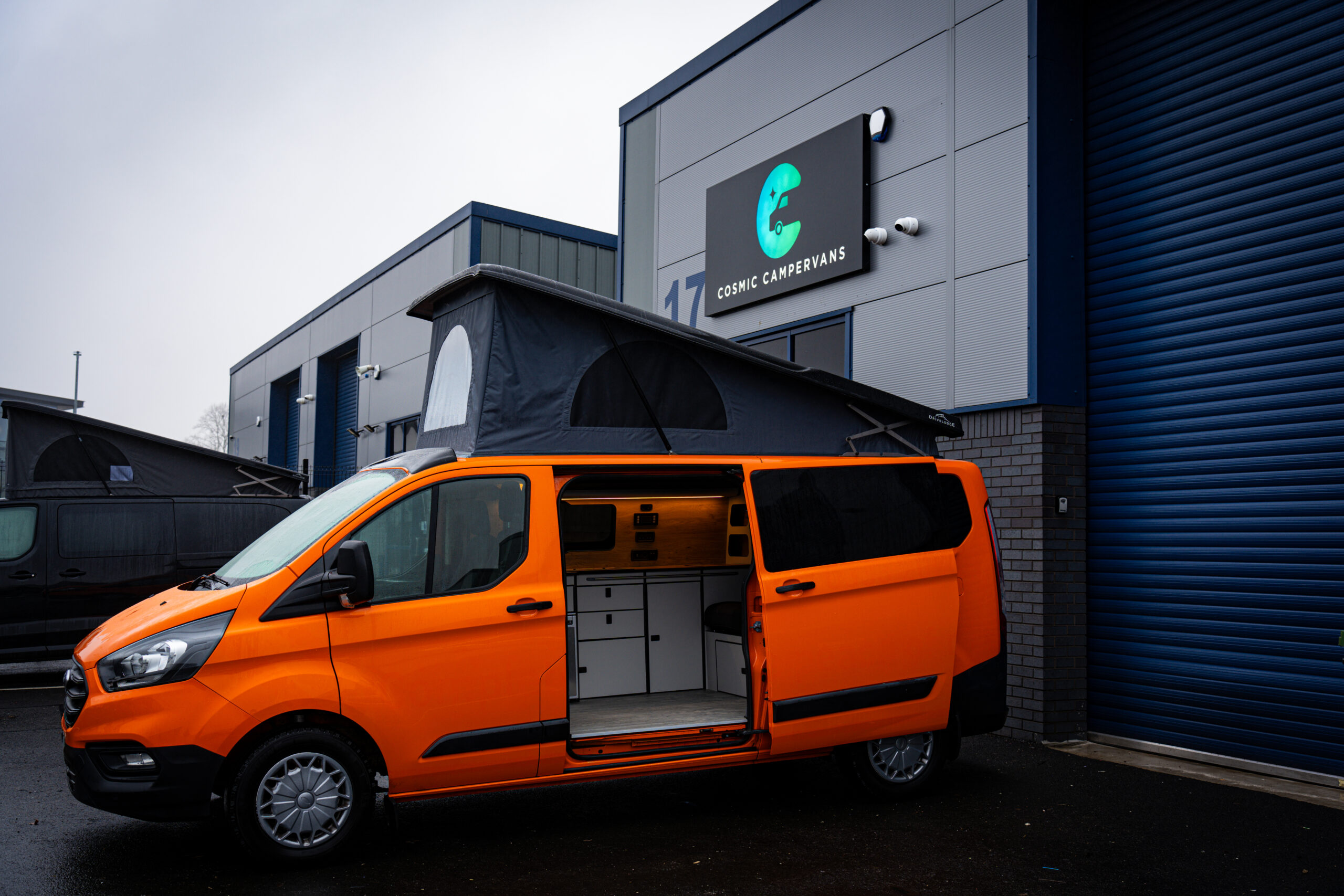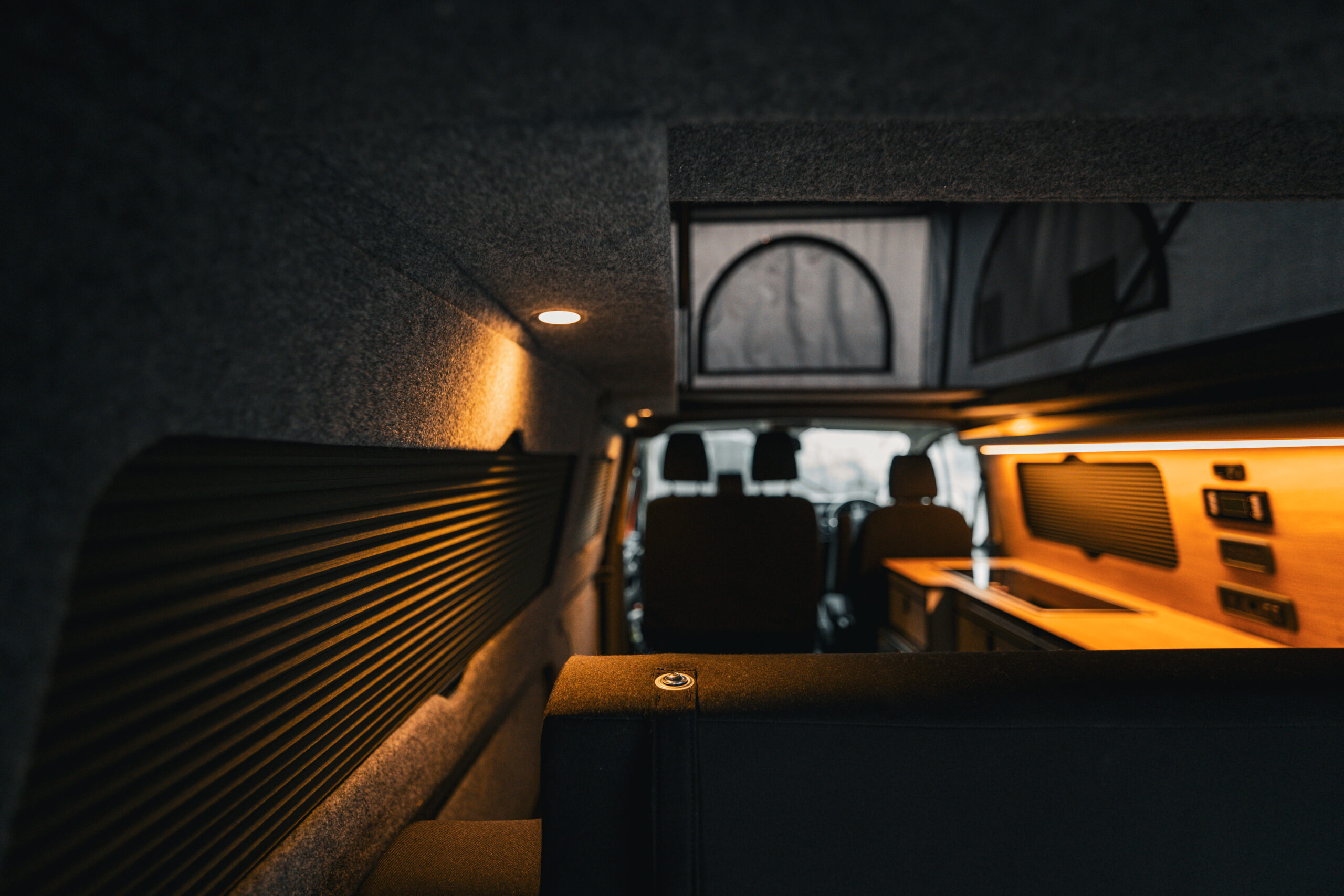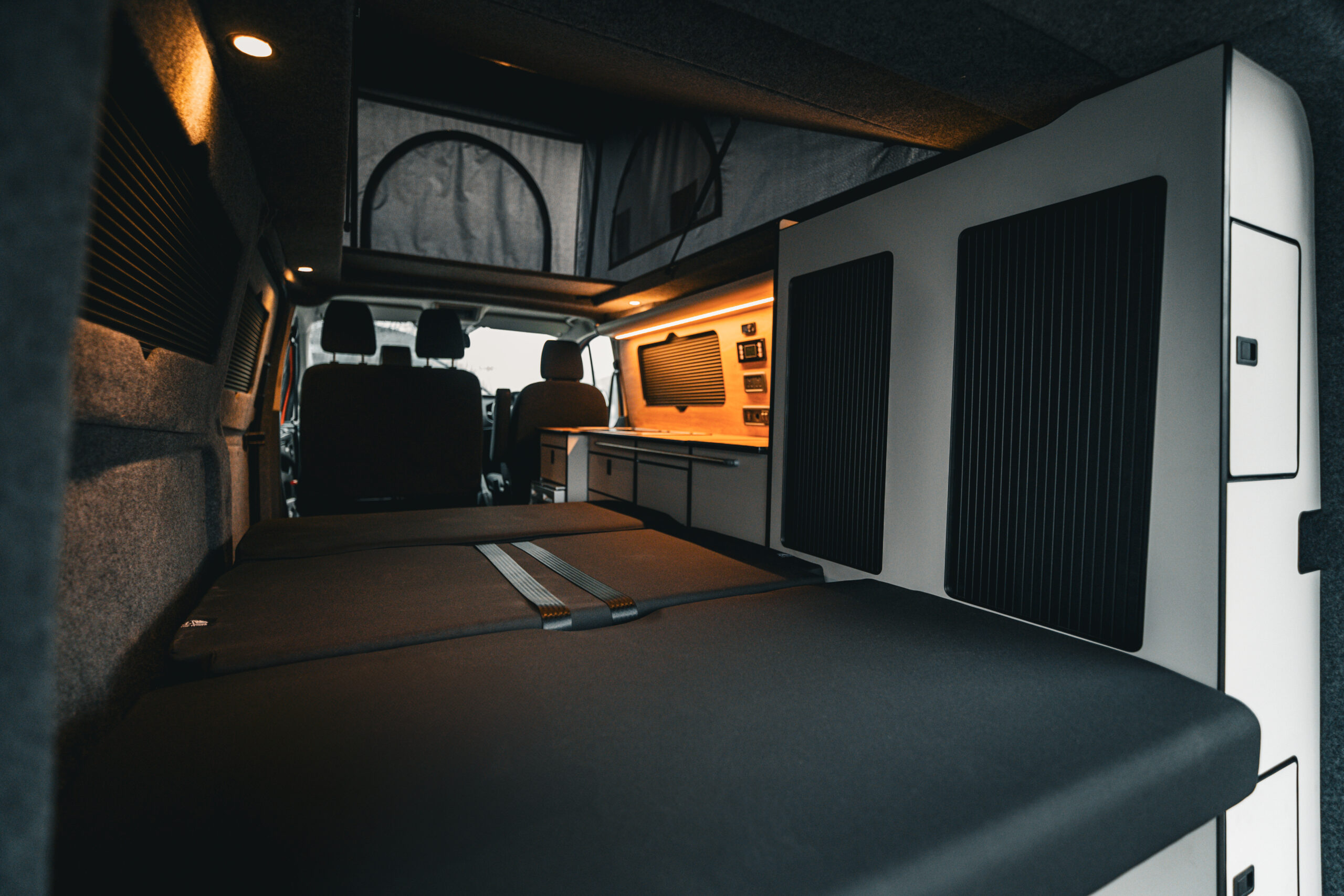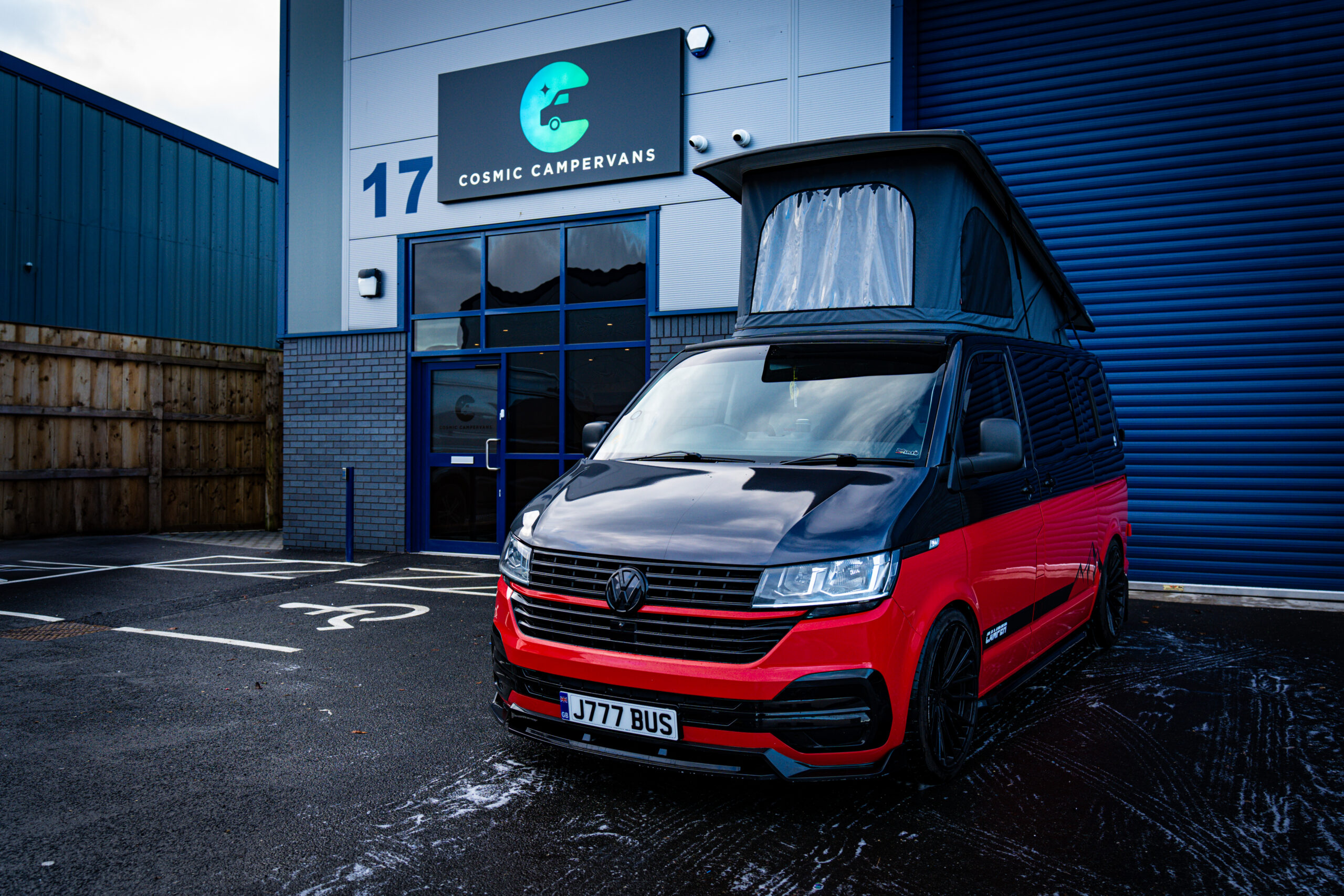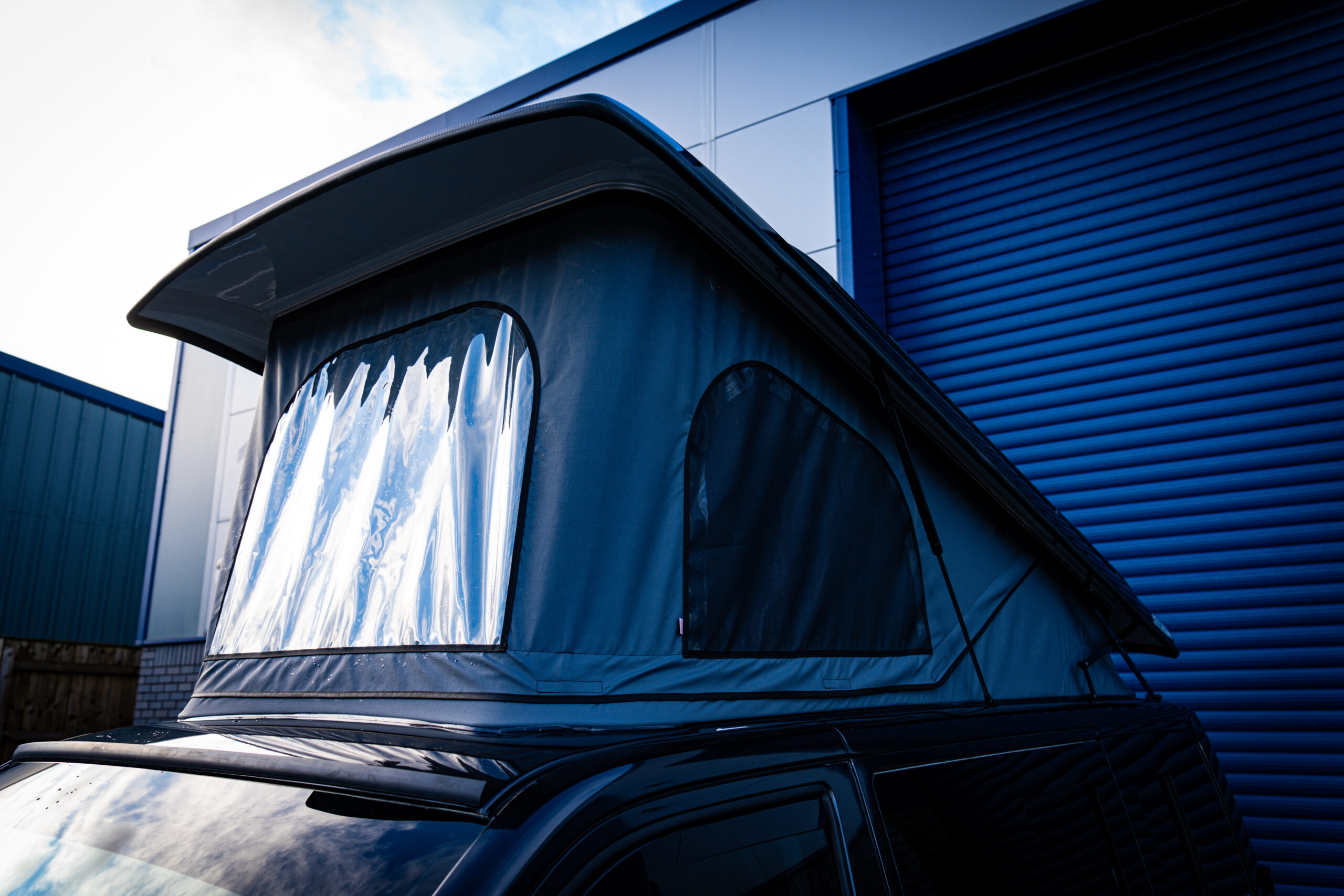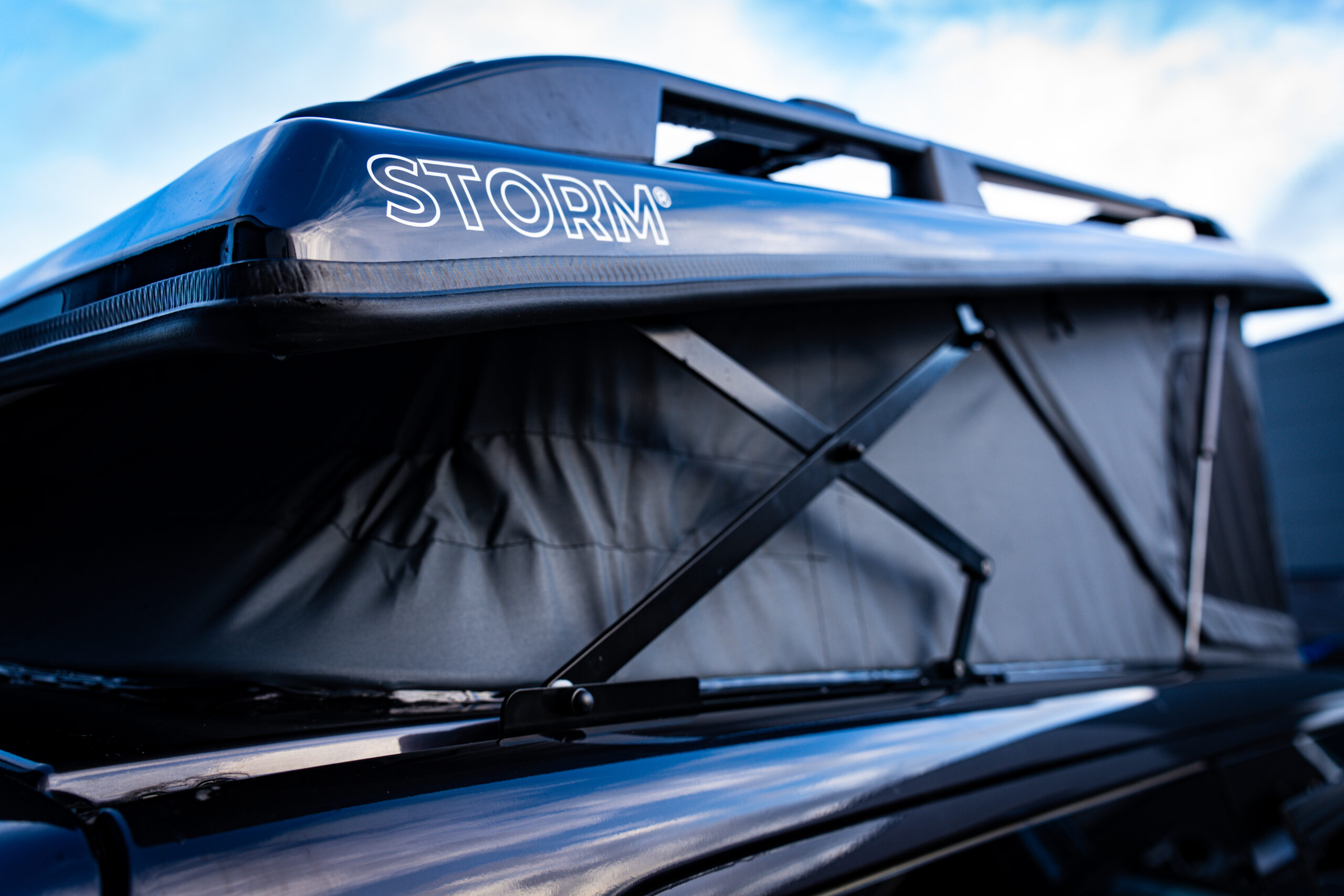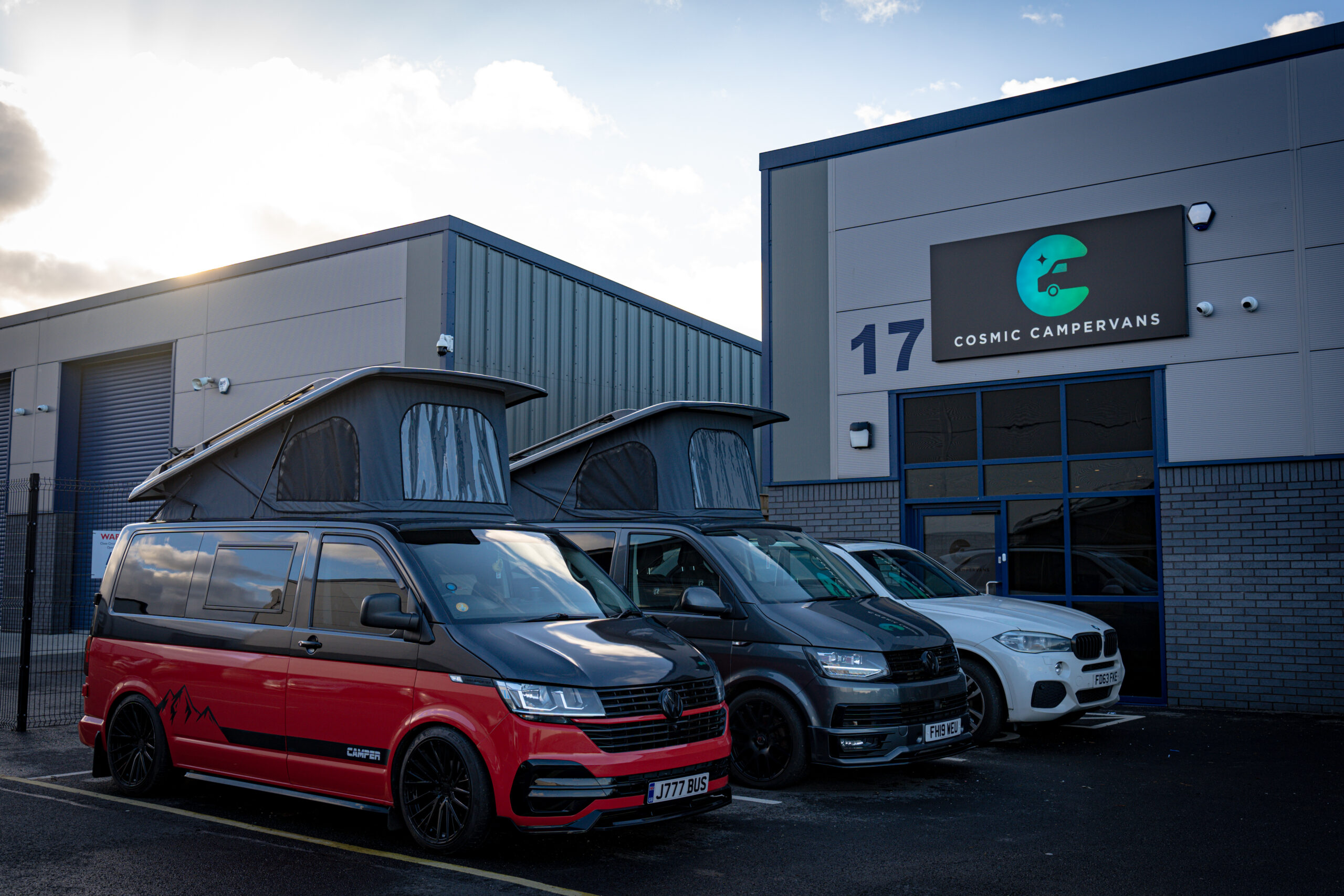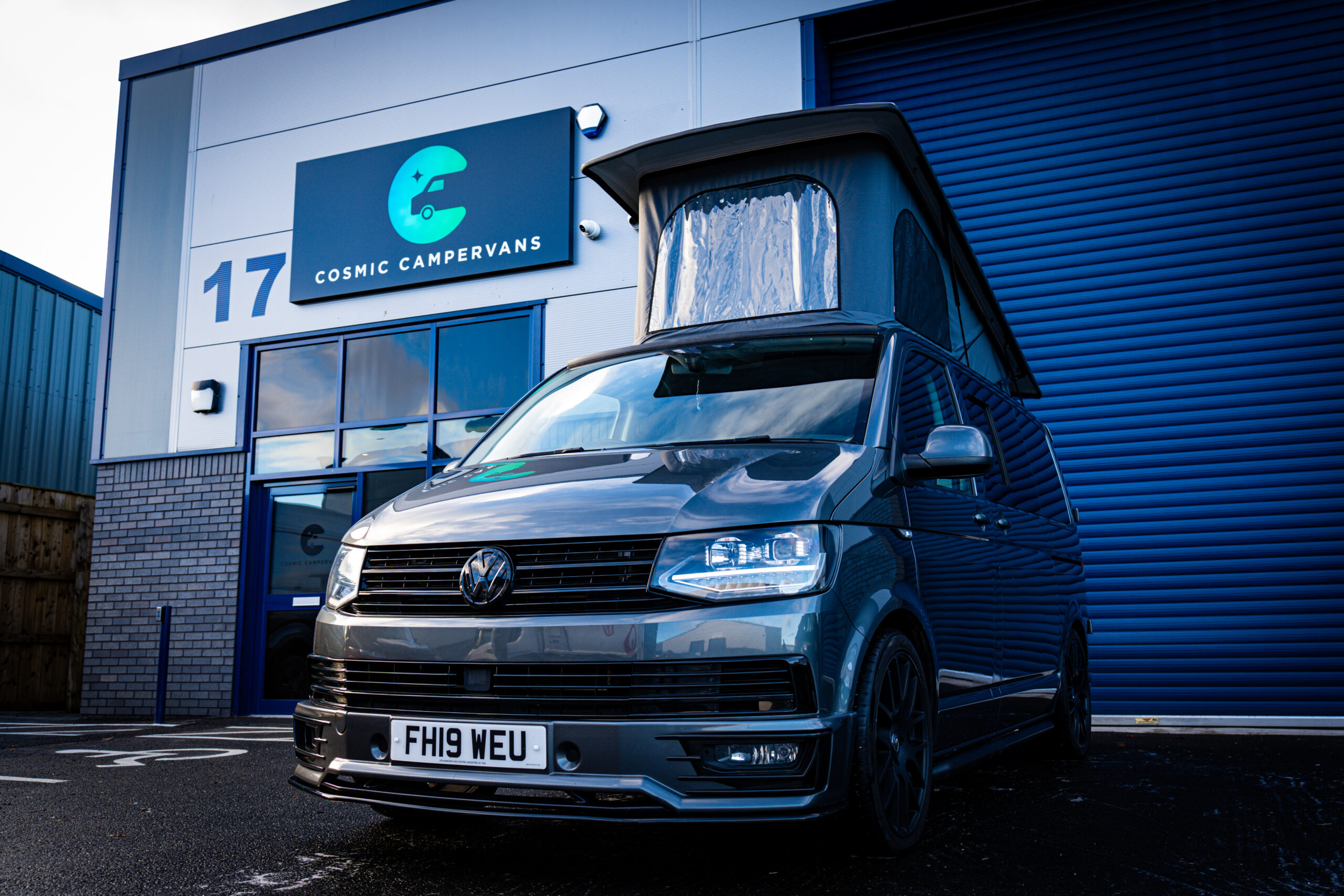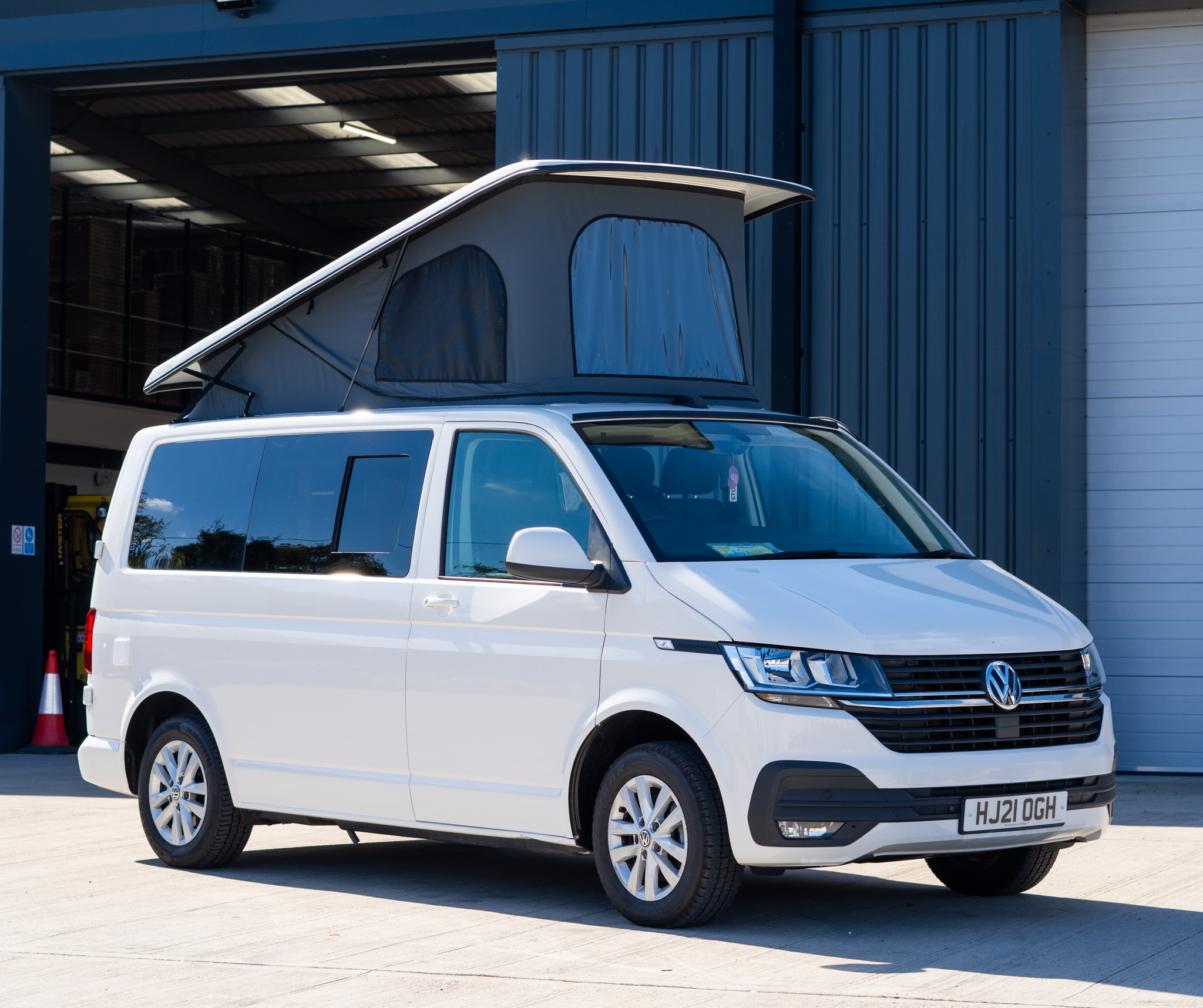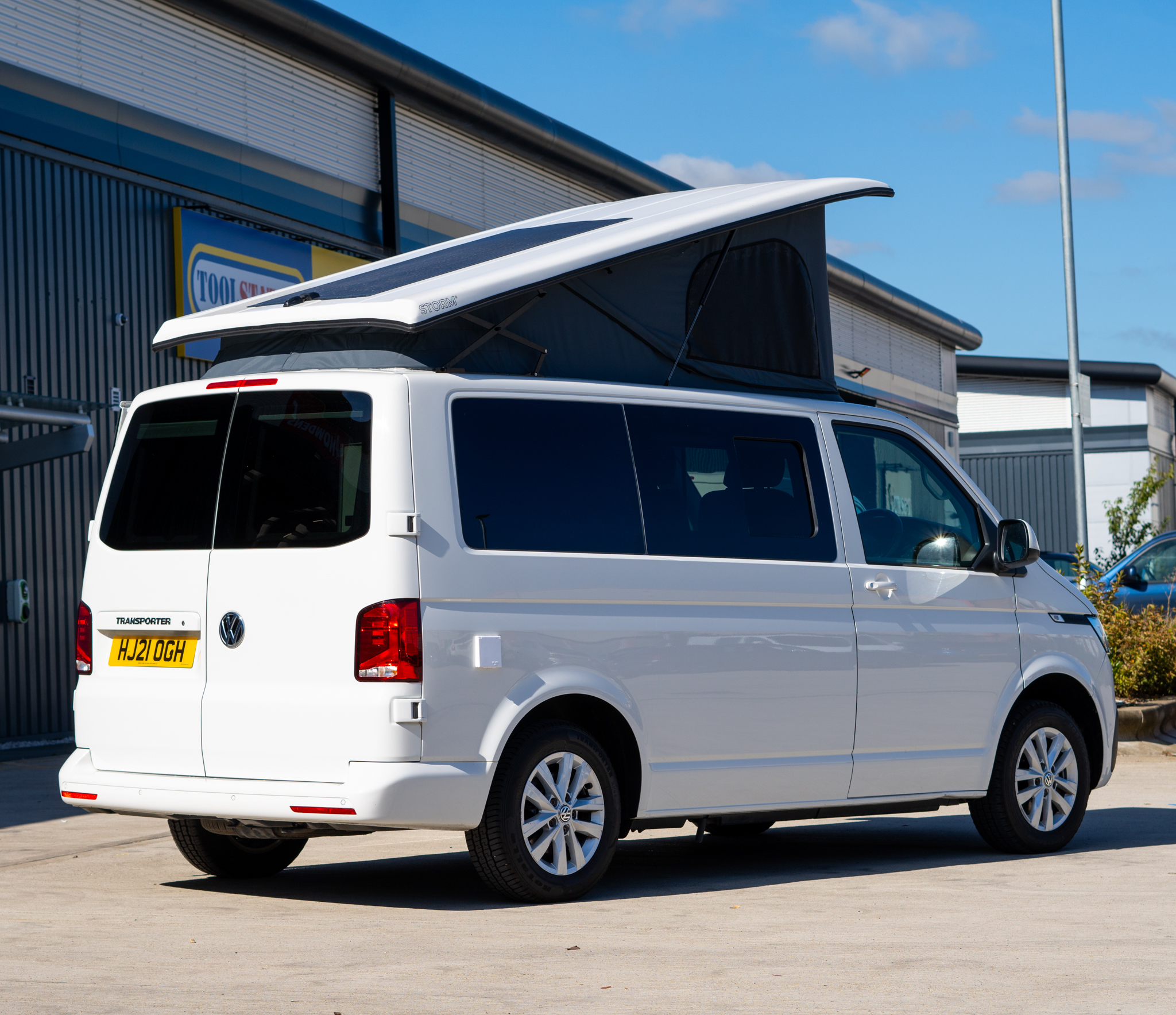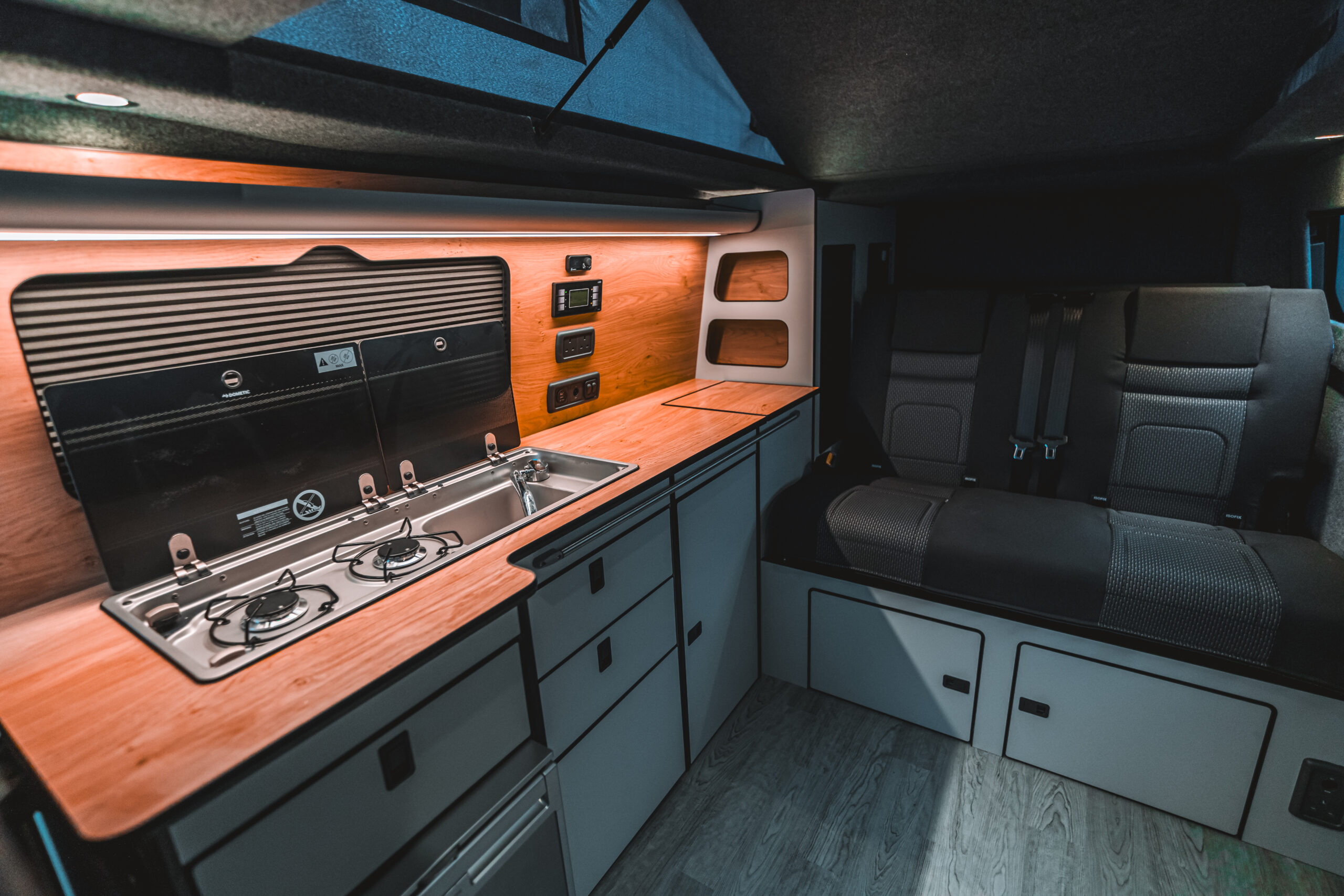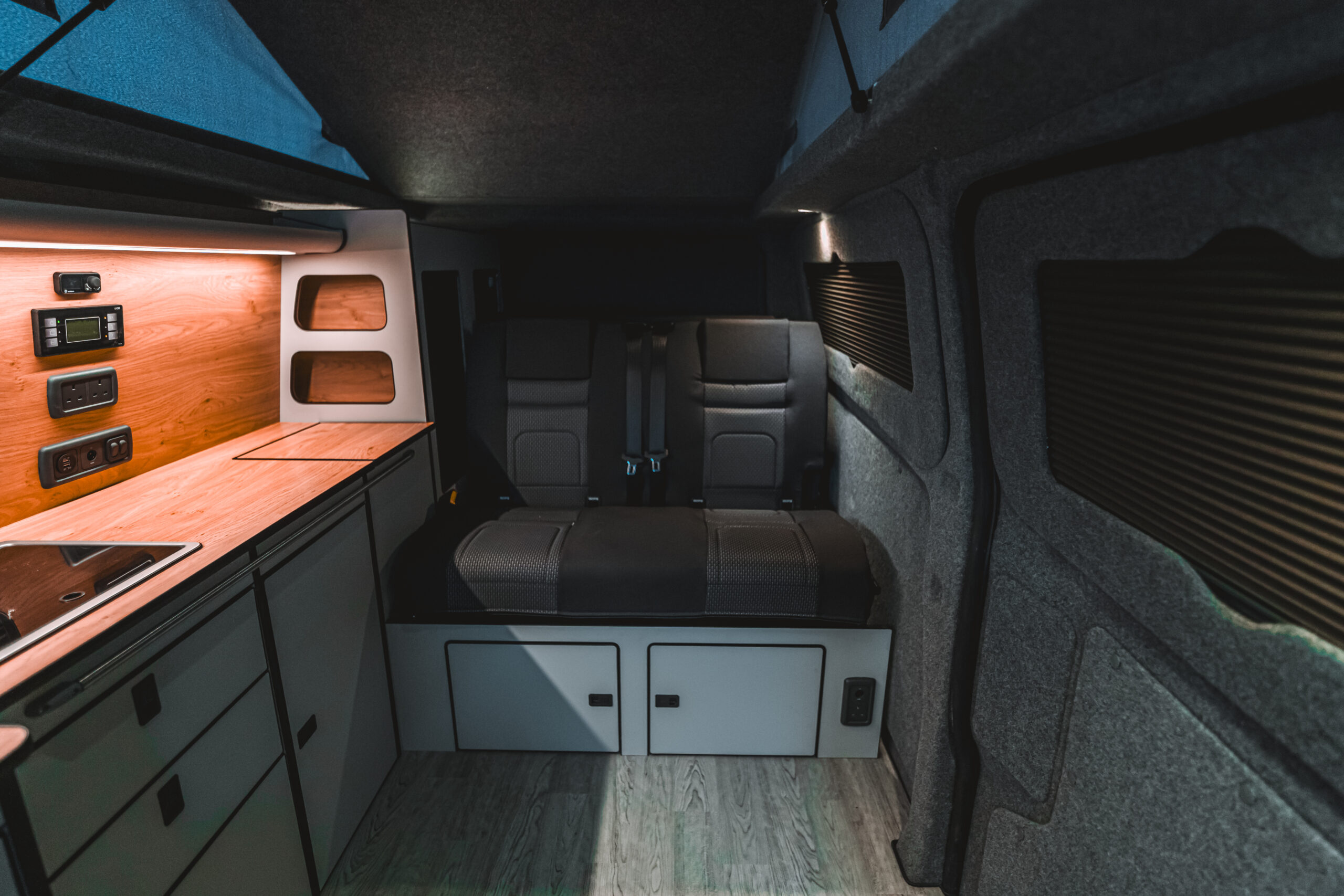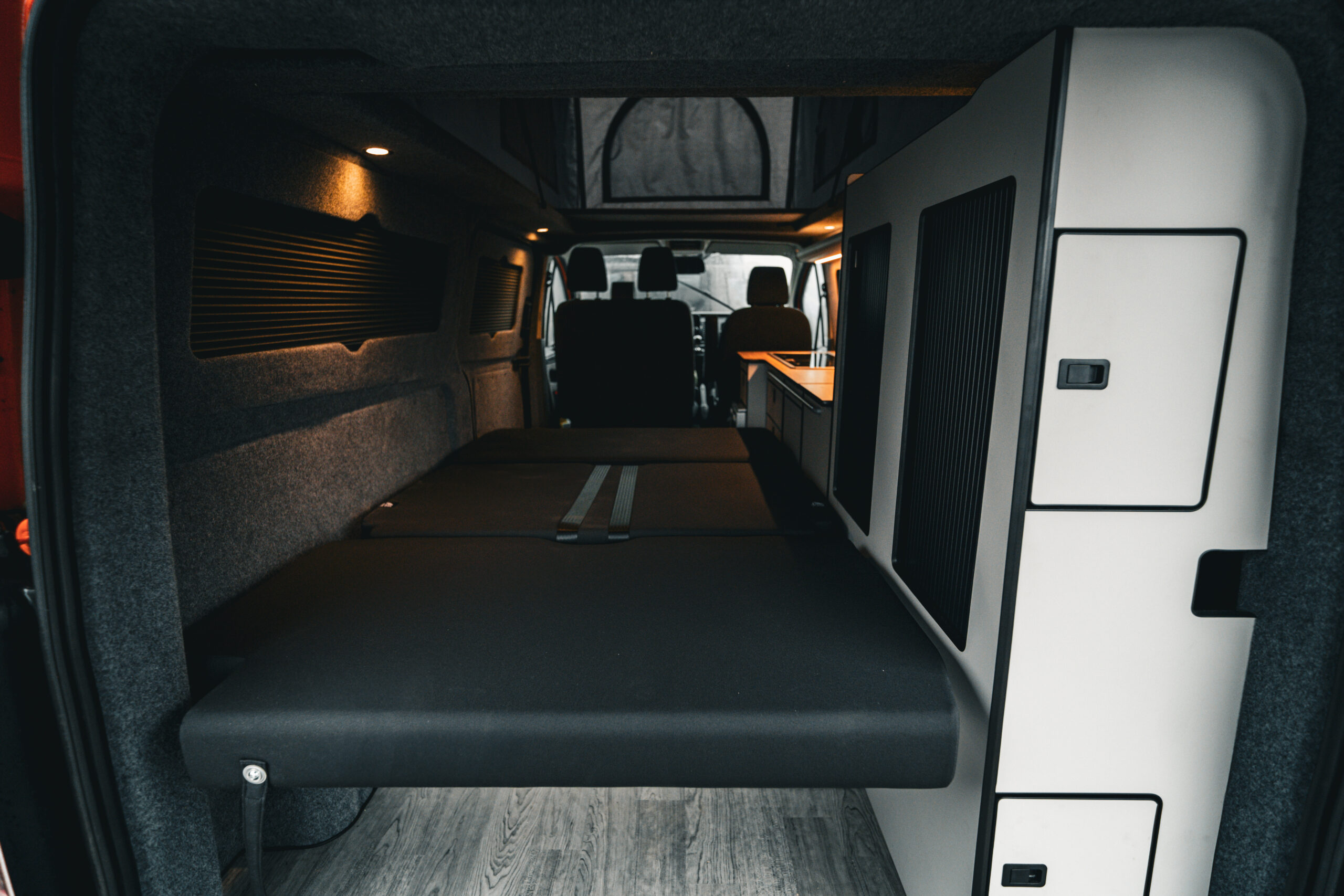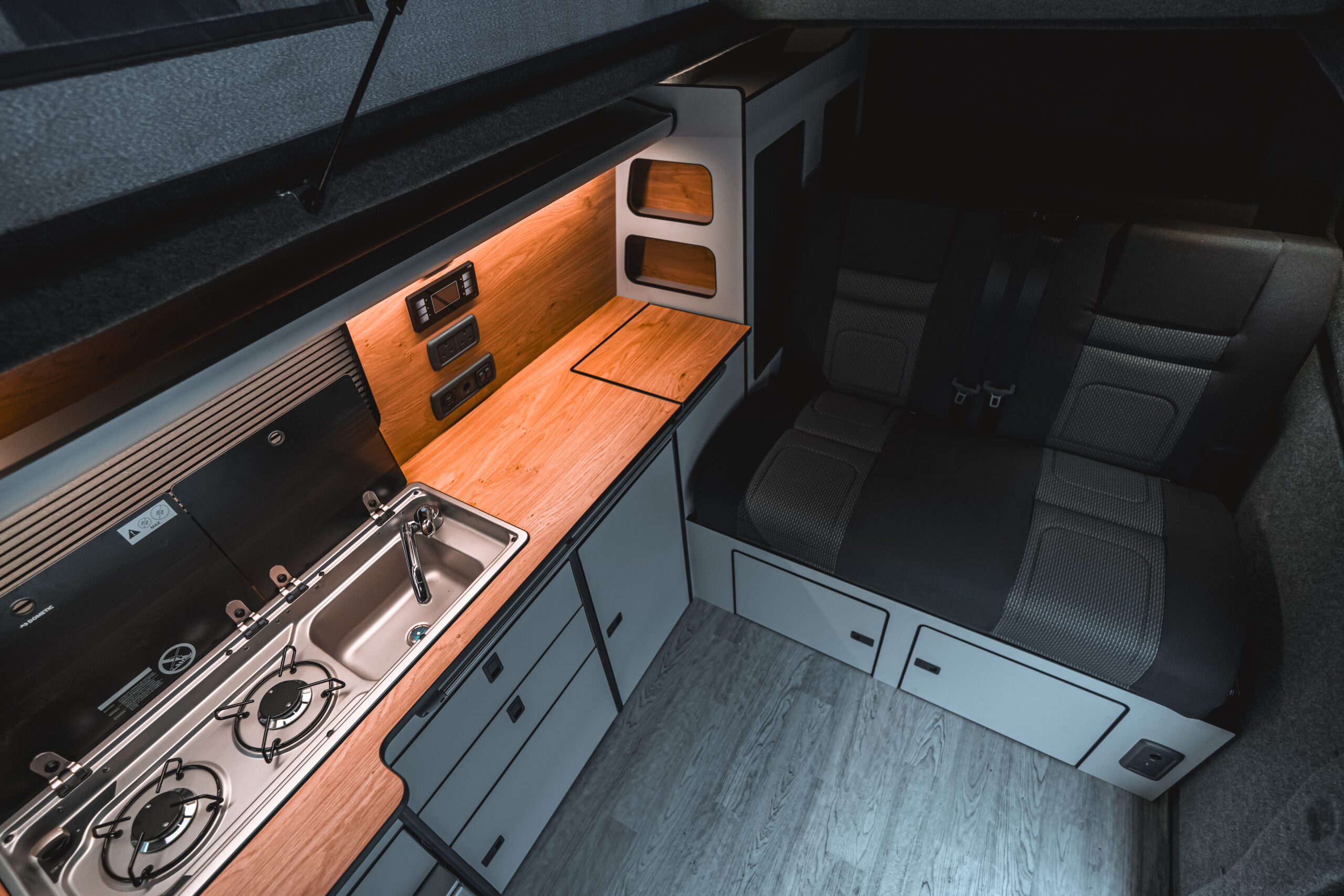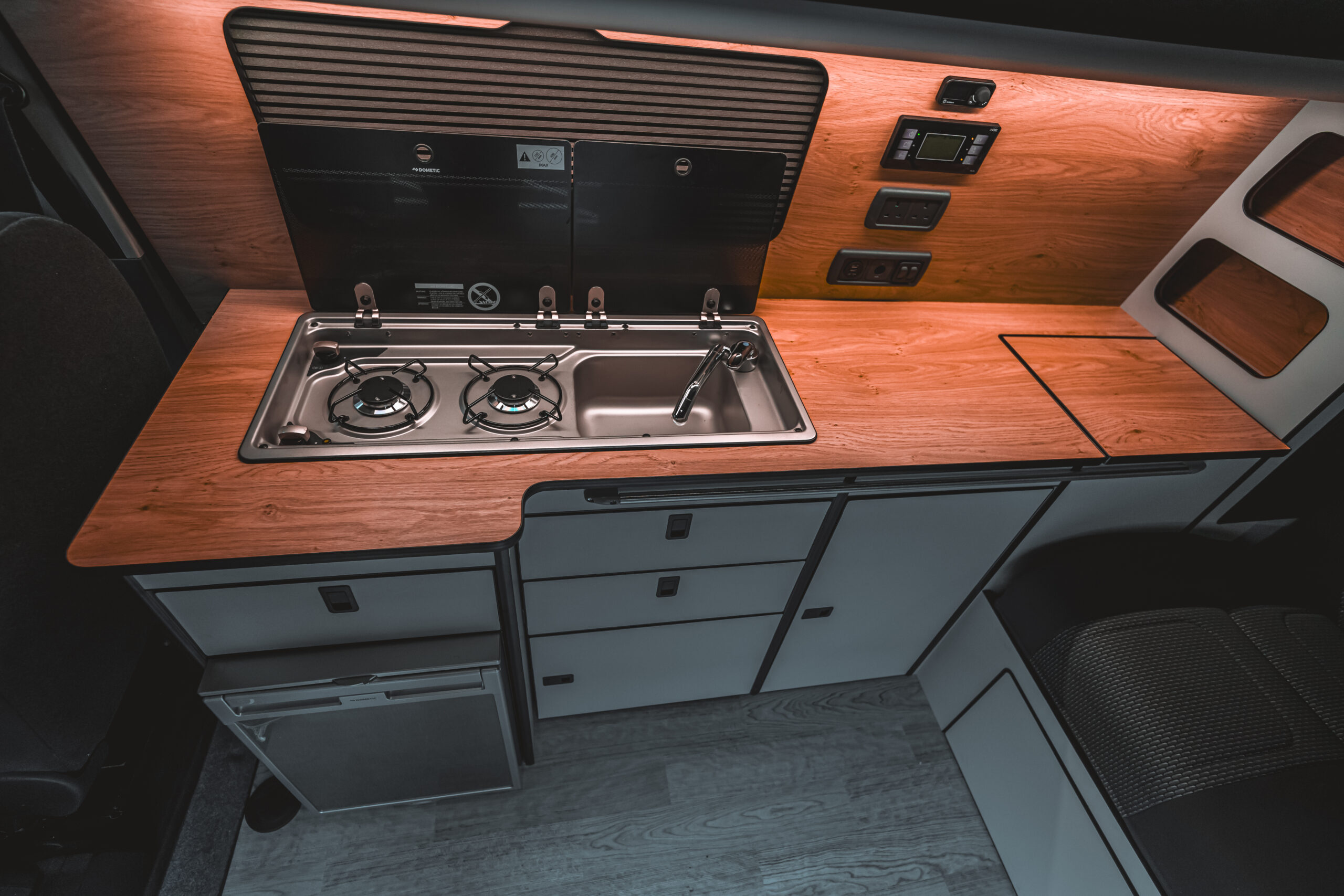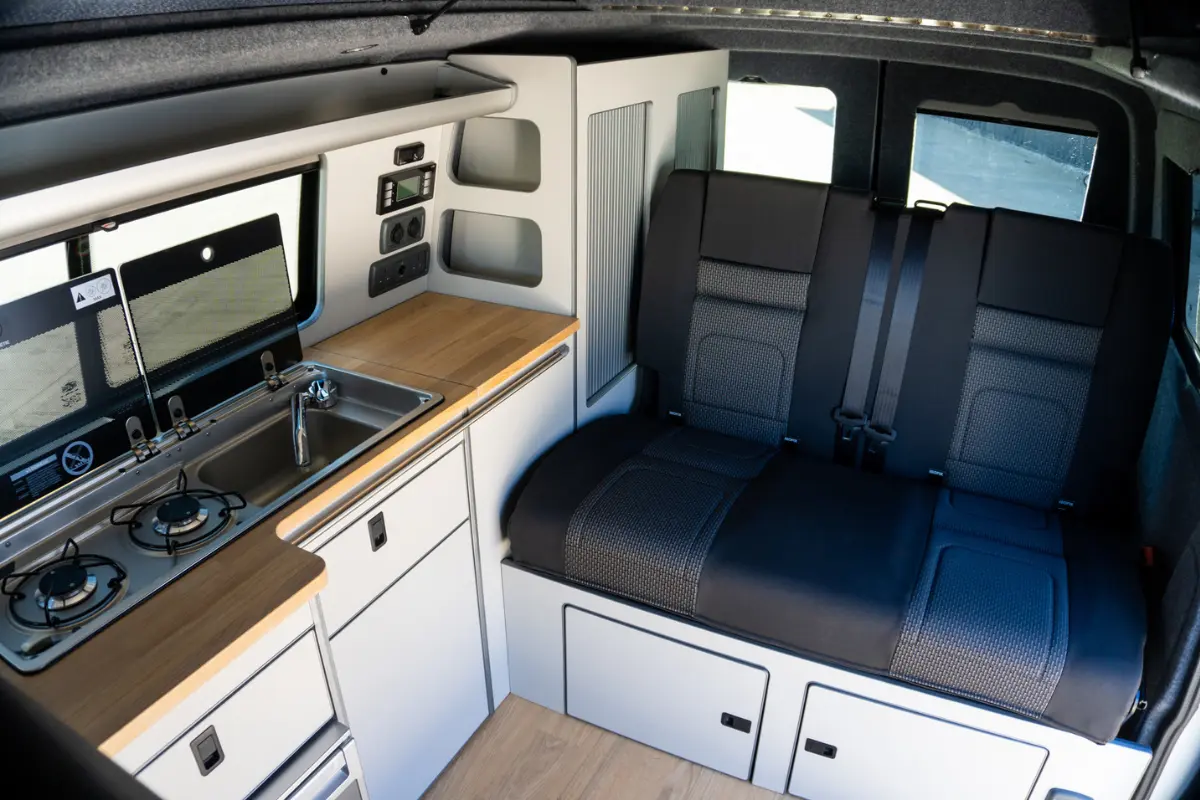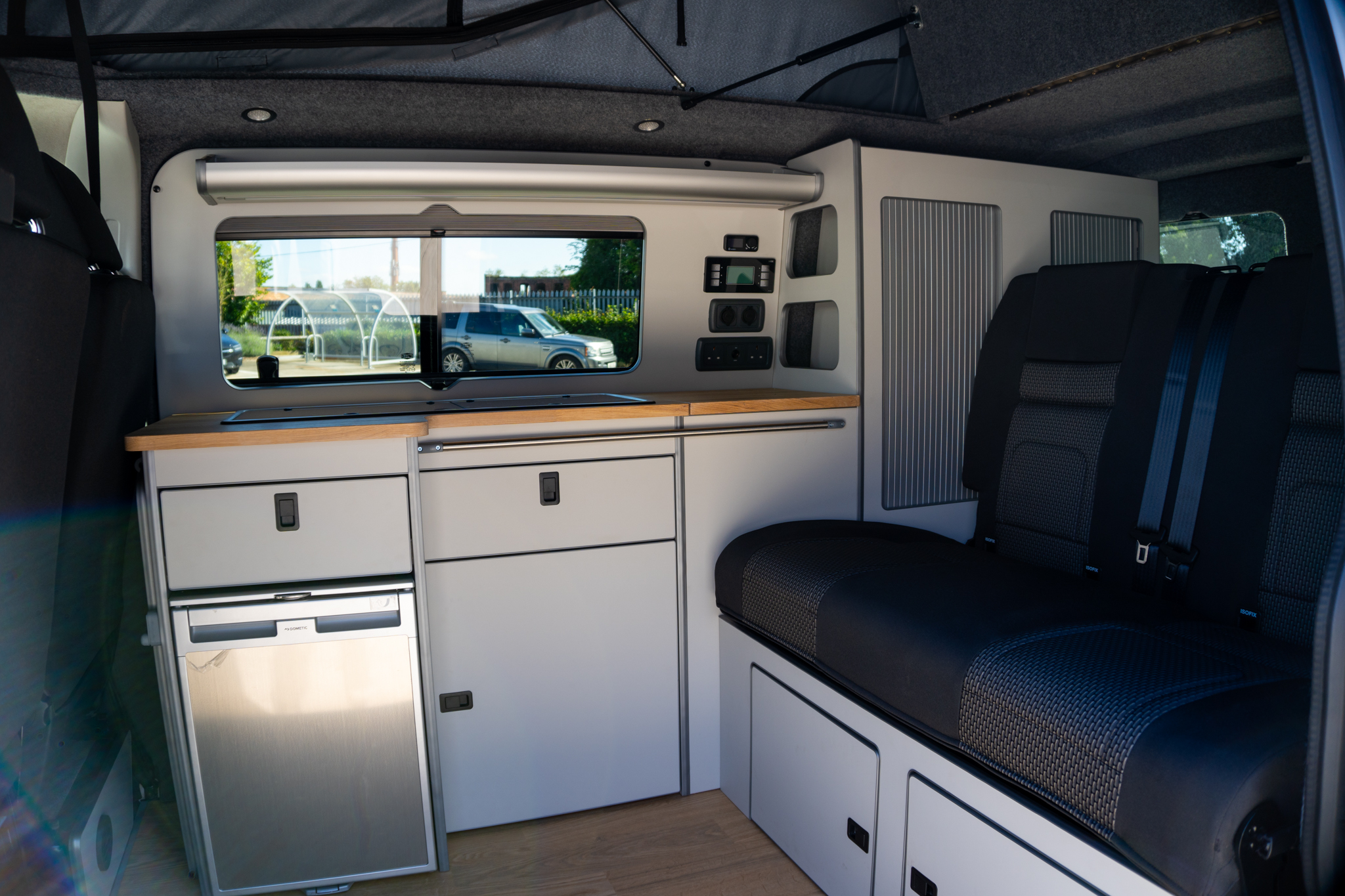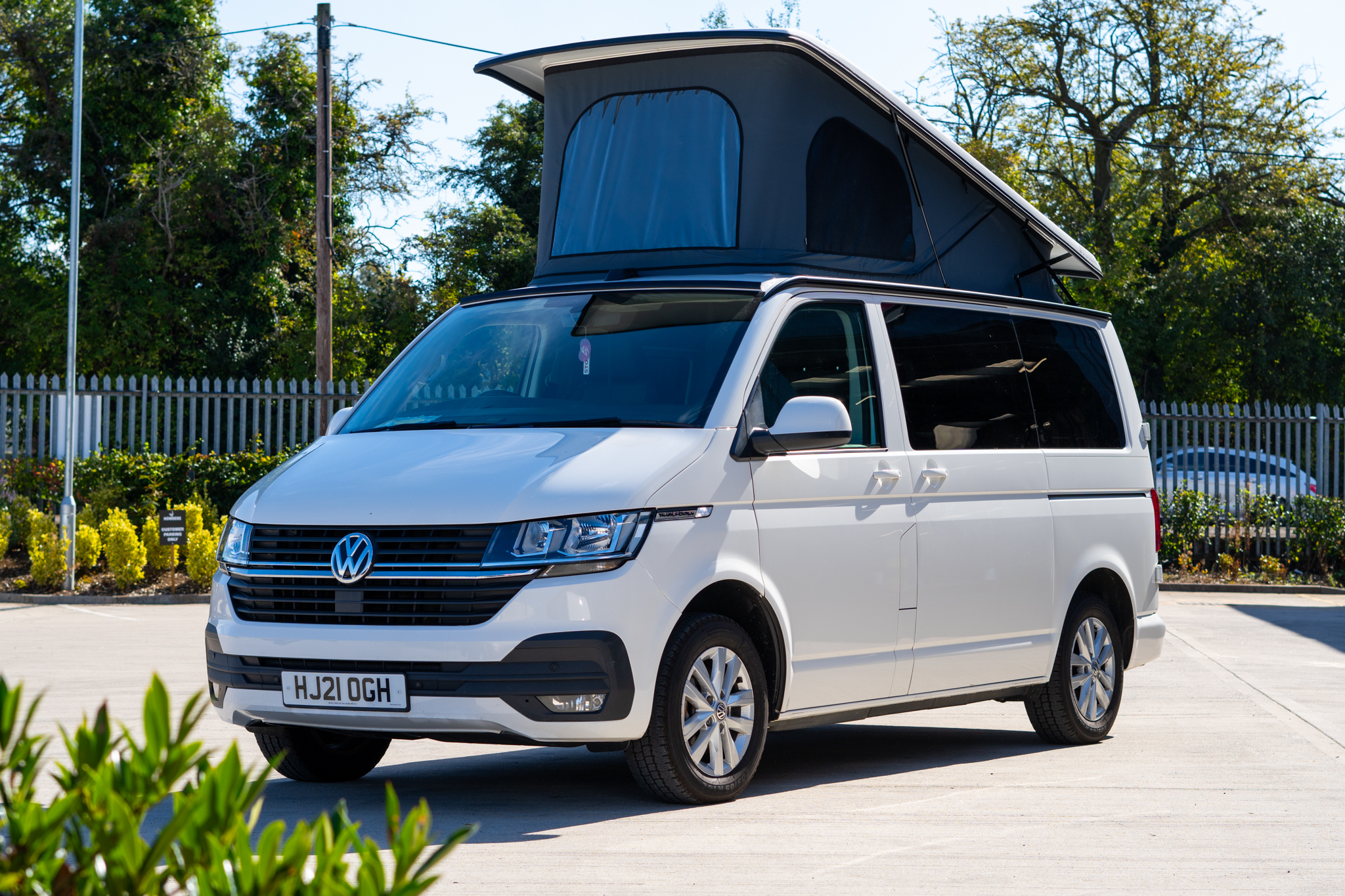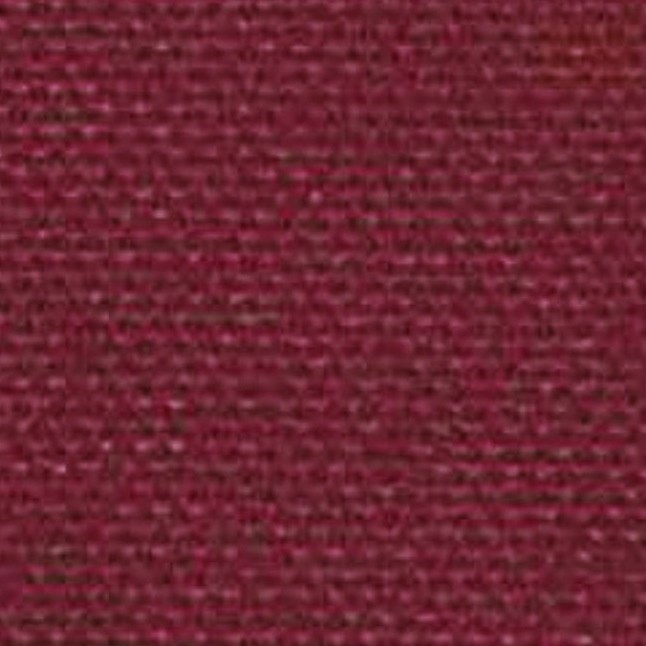Pole Awning vs Air Awning for VW Campervan
Choosing the right awning for your VW campervan conversion can make or break your camping experience. Just like a pop top roof, the perfect awning doesn’t just add extra space. It provides shelter, comfort, and transforms your campervan into a true home on wheels.
Not to be confused with wind-out awnings, pole and air awnings are an enclosed structure that attach to your van. Both pole and air awnings both extend your living space, but they are crucially different in how they’re set-up.
When weighing up the differences between pole and air awnings, the right choice depends on how you travel, how long you stay in one spot, and how much time you want to spend setting up.
I’ve set up both pole and air awnings on VW Transporters for various trips, from solo weekend getaways and longer family holidays. Each has its pros and cons, and I’m here to break them down for you.
Air Awnings for VW Campervans
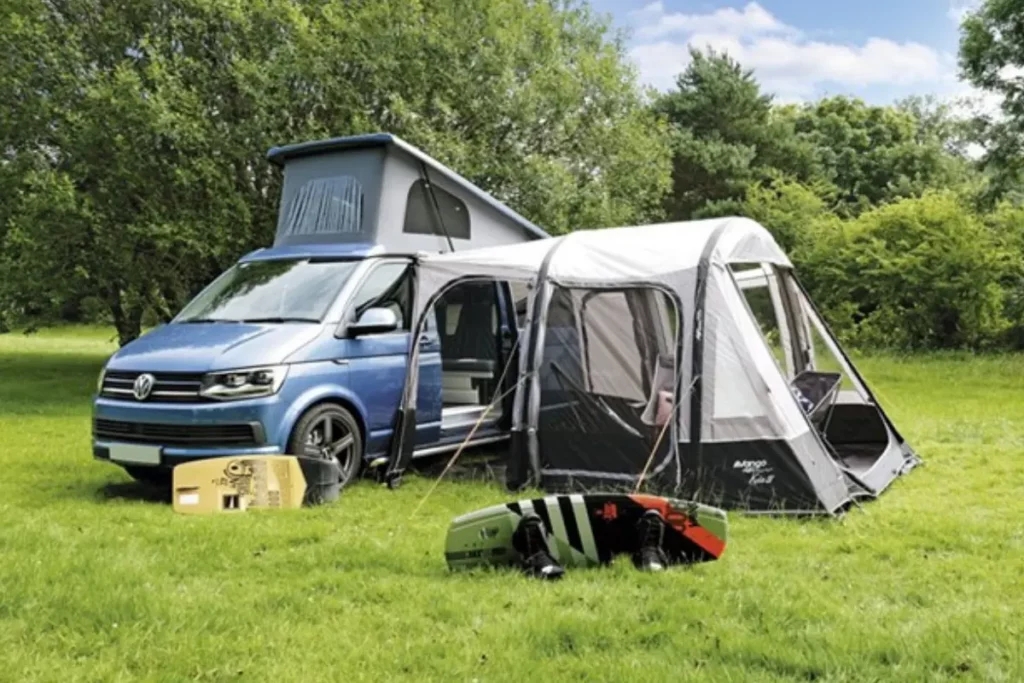
When it comes to awnings for VW campervan conversions, air awnings are a modern solution that’s been gaining popularity. Unlike traditional pole awnings, which rely on a series of metal or fiberglass poles for support, air awnings use inflatable tubes.
These tubes, when pumped with air, create a sturdy and reliable frame. The key difference here is the simplicity of setup and the convenience air awnings offer. Let’s get into some of the pros and cons!
Enjoy the outdoors in every season
Awning rails allow you to relax outside in rain, hail or shine.
Pros of Air Awnings
Set up is super simple
One of the biggest advantages of air awnings is how easy they are to set up. They’re perfect for solo travellers because there are no complicated poles to assemble.
You don’t need an extra set of hands, which means you can hit the road and set up camp at your own pace. This simplicity makes them an awesome choice for travellers that prefer solo getaways.
You can pitch an air awning in minutes
Air awnings are ideal for short weekend trips because you can pitch them in just a few minutes. The process is straightforward: roll out the awning, attach it to the van, and start pumping. The inflatable tubes fill up quickly, creating a stable structure without the hassle of aligning poles.
I’ve used an air awning when heading to the Lake District solo. It was super quick to set up after a long drive, and a pole awning just wouldn’t have been the same!
The awning is all one piece
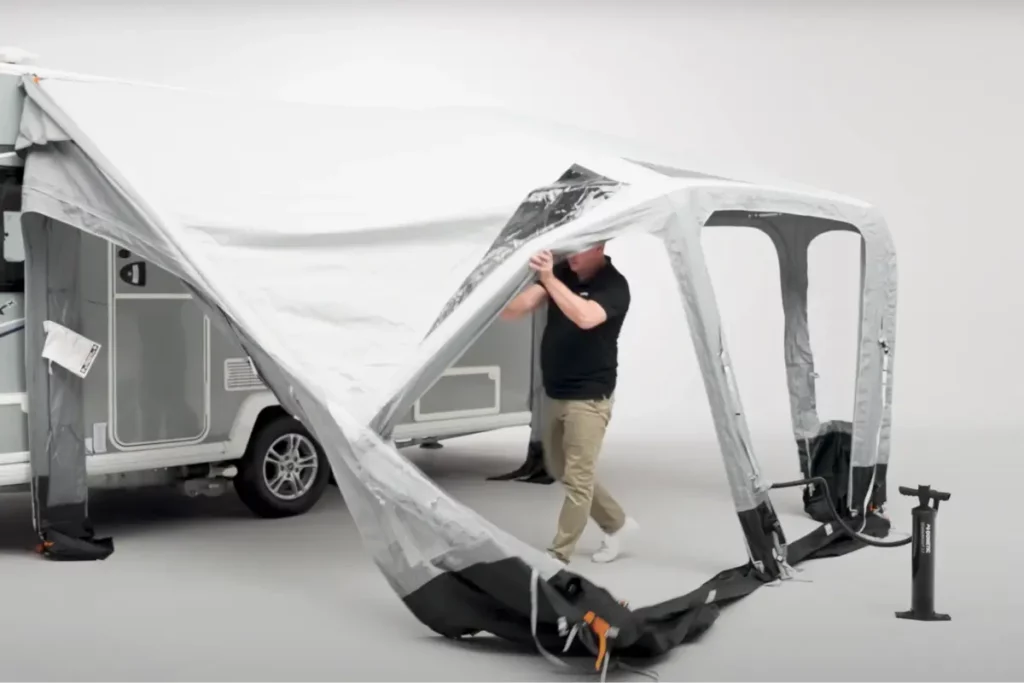
Another major benefit is that everything comes in one piece. The tubes and panels are all integrated, which means no more fumbling through instruction manuals trying to figure out what goes where.
This all-in-one design not only speeds up the setup process but also reduces the chances of leaving crucial parts behind when packing. If you’ve ever lost a crucial part to any of your gear and had to go through the rigmarole of getting it back, this integrated design will be a huge sigh of relief.
They’re sturdier than you think
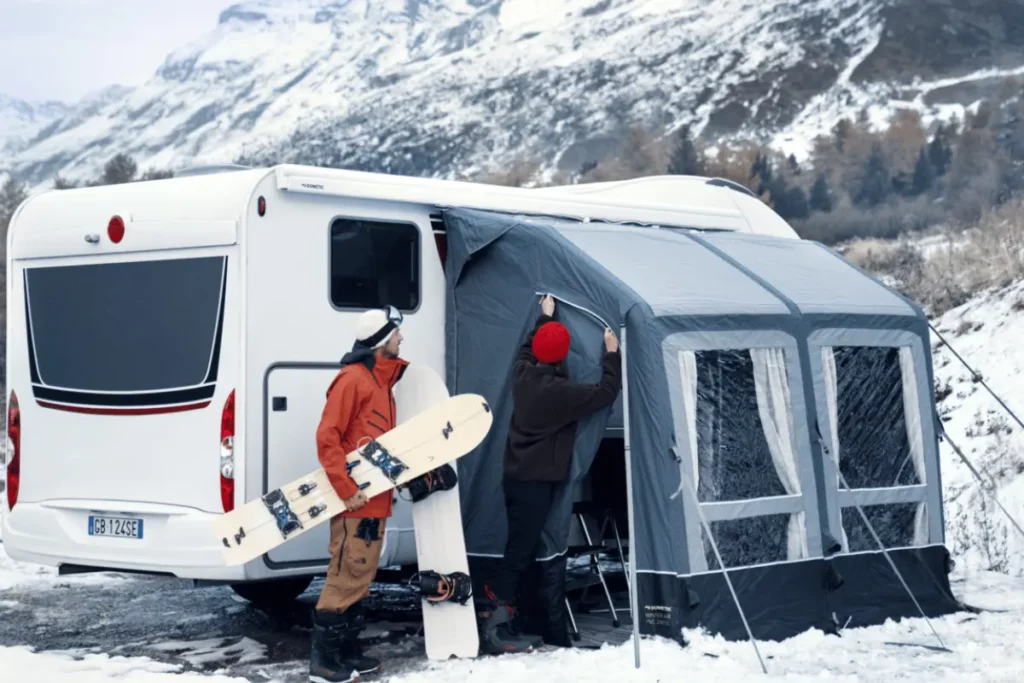
A common concern I hear from clients is whether air awnings can withstand bad weather. Many assume that because the structure is inflatable, it’ll collapse at the first gust of wind.
But actually, these awnings are sturdier than you’d think. The high-pressure tubes provide a solid framework that holds up well in most weather conditions. I’ve personally camped in windy spots and was impressed by how stable the awning remained throughout the trip.
Cons of Air Awnings
Air awnings can be a bit heavy
Okay, so the all-in-one design of an air awning means it has a bit more weight, compared to a pole awning which is all in separate components. You’ll find this especially if you’re opting for an all-season material model.
This hefty weight can mean that it is a bit of a hassle to get into position on the awning rail by yourself. But, when compared to pole awnings, which are practically impossible to set up solo, this isn’t a deal breaker.
I just wouldn’t recommend anyone with mobility or back issues to set it up by themselves. But honestly, get a few mates together and you’re sweet!
A common mistake in VW transporter conversions is not failing to consider weight distribution in the van. So, if you’re purchasing an air awning, make sure you have space to store it in a spot that won’t overload the vehicle!
You’ll pay a few more quid
Air awnings generally cost more than pole awnings. But in my experience working with both types, the higher price often comes with better quality. So if you’re planning to use it frequently, the extra cost could be well worth it. It’s one of those investments that pays off when you’re out on the road more often than not.
Pressure maintenance
One thing you need to keep in mind is regular pressure checks to maintain the tubes. This is why air awnings aren’t as ideal for longer setups. In my opinion, if you usually set-up for longer than a week, an air awning might not be the best option.
On a hot day, you’ll definitely want to keep an eye on the air pressure, as it can fluctuate and affect the overall structure. Trust me, it’s not a big job, but it’s something you don’t want to forget when you’re mid-trip.
Pole Awnings for VW Campervans

Pole awnings are the traditional choice for VW campervan owners who prefer a reliable and sturdy setup. Unlike air awnings, which rely on inflatable tubes, pole awnings use metal or fiberglass poles to create their structure. Setting one up involves threading the poles through designated sleeves or attaching them at specific points to form a stable frame.
While this might sound more time-consuming, pole awnings have the advantage of being a ‘set and forget’ solution – once they’re up, they stay solid without the need for ongoing maintenance like checking air pressure. The key differences from air awnings are their adjustability, lighter weight when packed, and ease of repair.
Pros of Pole Awnings
Pole awnings are preferred for long term set ups
Like I said earlier, pole awnings are perfect for longer-term set-ups. That’s why they’re so popular with people in campervans who set up for a whole season.
As you can imagine, air pressure is really important for an air awning and adds an extra step. But with pole awnings, you don’t have to worry about the pressure dropping mid-trip or making adjustments in changing weather.
Adjustable set-up
Pole awnings allow for precise adjustments, so they’re a lot more suitable for uneven terrains. You can modify the pole heights to ensure a stable and level setup, which is especially beneficial when camping on slopes or uneven ground.
This adaptability is something I always recommend for those heading to more rugged, off-the-beaten-path locations where flat ground isn’t guaranteed.
Lightweight and compact
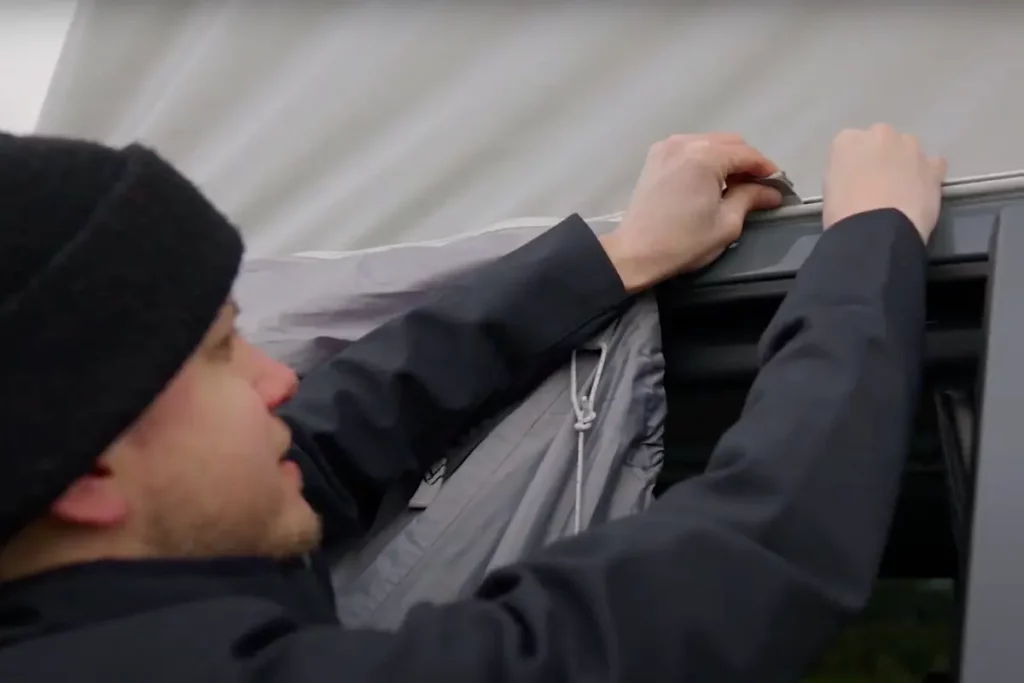
Traditional pole awnings are made up of two components: canvas and poles. This separation makes them easier to handle and pull through onto your awning rail compared to air awnings, which are all-in-one and heavier.
Plus, storing canvas and poles separately is a real bonus if you’re working with limited storage space in your van. Being able to distribute the weight and size of the components makes them much more practical for campers who like to stay organised on the road.
If you’re struggling with storage space in your campervan conversion, check out some of these VW Transporter layout ideas.
Easy to repair
This is a big one for me. If pole awnings are damaged, individual poles can be easily replaced or repaired, often with readily available parts.
This simplicity ensures that maintenance is straightforward and cost-effective. This just isn’t the case with air awnings, where a puncture might put the entire structure out of action. A pole awning lets you swap out a single part and get back to enjoying your trip without a fuss.
Cons of Pole Awnings
They can be complicated to set up
Pole awnings can be more time-consuming to set up, especially for solo campers. If you’ve ever pitched a dome tent, the process is quite similar—threading poles through sleeves, ensuring each pole locks into place, and adjusting tension as needed. This can be tricky if you’re new to pole systems.
The need to identify and connect multiple poles correctly means that setup can be intricate and may require practice to master. Unlike air awnings, where you just pump and go, pole awnings demand a bit more patience and know-how.
Risk of damage in high winds
Pole awnings rely on rigid structures that, in severe weather conditions, can be at risk of bending or breaking. Strong winds can put immense pressure on the poles, leading to potential damage. If a pole snaps, sharp edges can pose safety hazards and may even cause further harm to the awning fabric.
This contrasts with air awnings, which are more flexible and tend to absorb wind pressure without structural damage. So, if you’re planning trips to particularly windy spots, it’s worth considering how well your awning choice will hold up.
My Recommendations: Which Awning Should You Choose?
Transform Your VW into the Ultimate Camper
Save yourself the headache and let us do the heavy lifting! We’ve converted over 500+ VW Transporters.
In all honesty, I don’t have a firm preference between pole and air awnings. Let me take you through some of the things I take into consideration when I recommend one or the other to a customer.
How long is your trip?
One of the first things I ask customers is how long they typically stay in one spot. For quick weekend getaways or road trips with lots of short stops, I always lean towards air awnings. They’re super easy to set up and perfect for those short stays where you don’t want to spend half your time pitching camp.
But, if you tend to stay in one place for a week or more, pole awnings win. They’re more stable over the long term and don’t require the ongoing maintenance that air awnings need, like checking tube pressure.
Do you usually travel solo or with others?
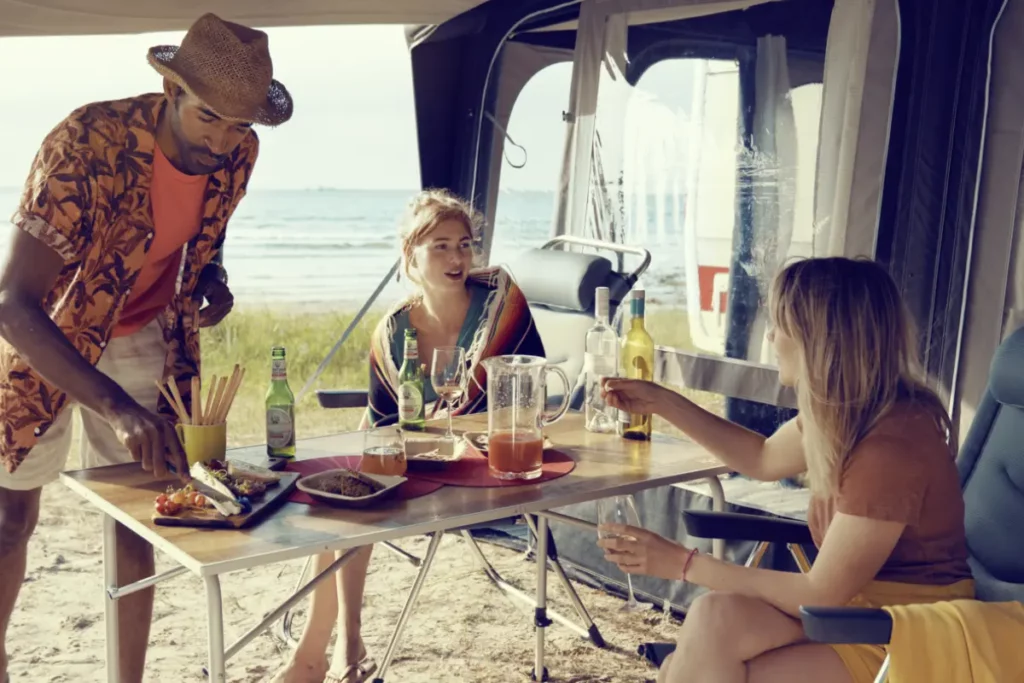
Who you travel with is also a big consideration for awnings. Air awnings are ideal for solo travellers because of their easy setup. You can pitch them in minutes without extra help, as long as you’re okay with a bit of heavy lifting.
On the other hand, pole awnings work better when you’ve got extra hands. If you usually camp with family or friends, setting up a pole awning together isn’t a big deal, and you’ll benefit from the added stability and adjustability they offer.
What’s your budget?
Budget plays a big role too. Air awnings come at a premium but offer unmatched convenience and quick setup. In my experience, the higher price often means higher quality, so if you’re planning to use your awning frequently, the investment could be well worth it.
Pole awnings, meanwhile, are generally more budget-friendly. They’re a great option if you’re looking for something reliable without breaking the bank, especially for longer stays where setup time isn’t as much of an issue.
Personally, I like to keep a smaller air awning for spontaneous weekend trips and also have a larger pole awning for longer trips when I need a bit more room for the family.
If you’re not sure how much you should be budgeting for your project, check out my post on how much a VW Transporter conversion costs.
Key Takeaways
Okay, so here’s my final recommendation on which awning you should choose.
Choose Air Awning if:
- You’re travelling solo (and you can handle heavy lifting)
- You’re heading out on short trips.
- You don’t mind spending more for convenience.
Choose Pole Awning if:
- You’re camping long-term.
- You have limited storage in your van.
- You prefer a more budget-friendly option and don’t mind spending a little extra time on setup.
I hope this guide has helped you to shop with confidence for your awning! Of course, in this post I’ve covered enclosed awnings, but if you’re looking for a simple wind-out option to provide a bit of shade, we can help with that too.
For more information on wind-out Fiamma awning installation, just check out our page.

